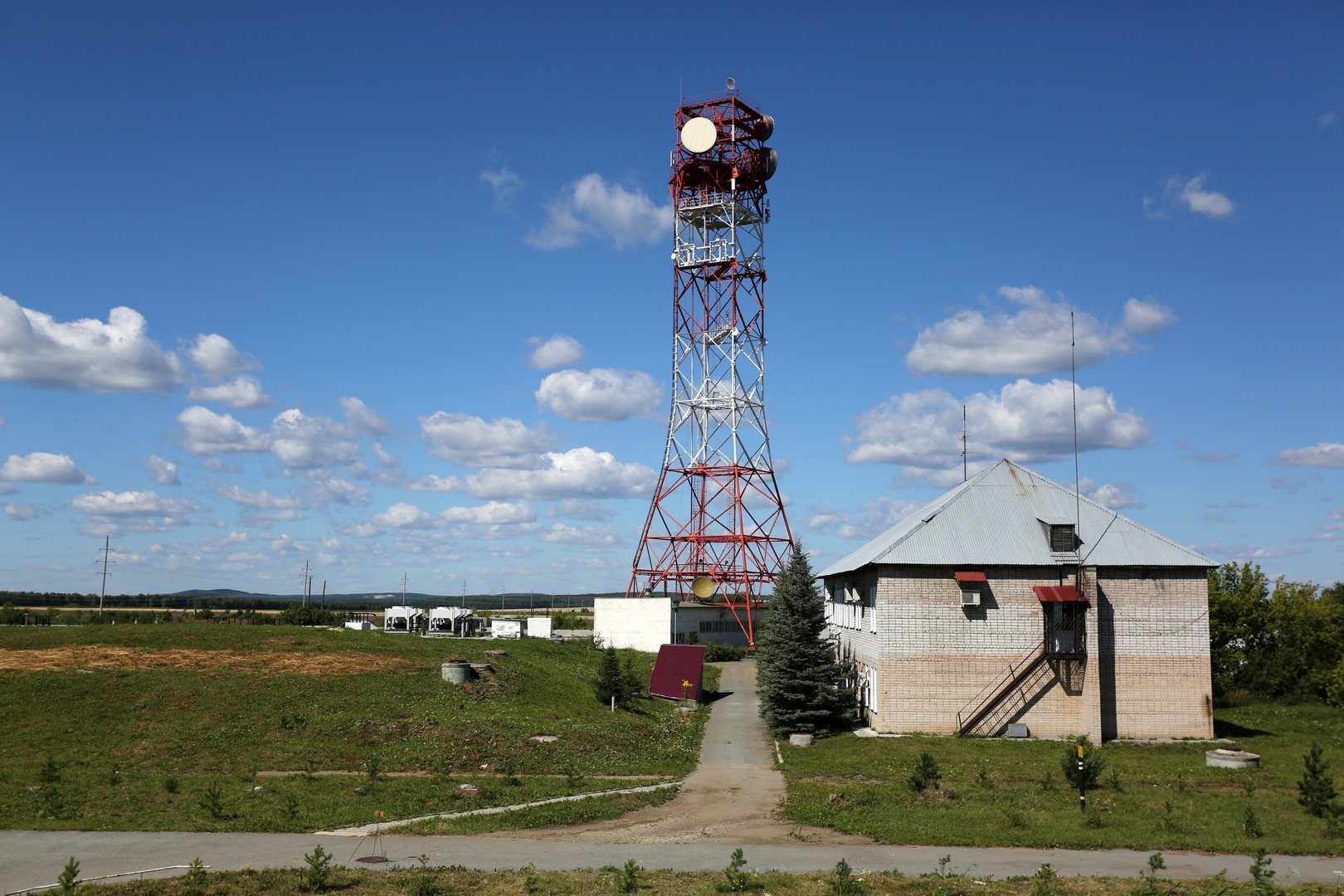
For the first time, Rostelecom showed the public a once-secret object, and now it is a main communications hub located literally at the junction of Europe and Asia. Several hectares of land and real underground catacombs, where modern equipment is adjacent to the museum exhibits. Details under the cut.
In the Sverdlovsk region, sixty kilometers from Yekaterinburg, there is a settlement called Schelkun. At first glance, this is an unremarkable village, of which there are hundreds in the region. Rows of single-storey wooden buildings, Lenin Street as a central, and an ordinary grocery store, where the local public often gathers in the evenings - a rather typical picture that you see from the bus window, passing through Schelkuna, if not for one “but”.
On the outskirts of Shchelkun, above all this uniformity, stands several giant radio-relay towers, attracting the gaze of those who come here for the first time. Here is located the once secret object - the trunk node of automatic switching for working with classical telephony, the node of distribution of broadband access services, TV and mobile communications. The reserve command post of the macro-regional branch “Ural” of PJSC Rostelecom is also located here, from where it is possible to interact with the regions in the event of an emergency.
Communication dungeons, spread over 7 hectares, were built in 1966 and designed to protect against a possible nuclear strike. Such objects, as a rule, were built at a distance of 60-70 kilometers from a large city and in case of war were supposed to serve also as a refuge.
In 1966 two technical buildings were built here, one of which housed the equipment for amplifying analog transmission systems. It was a K-60 lamp apparatus. In 1979, a third technical underground building was constructed. There moved all the equipment. Simultaneously with the construction of the first building, a radio relay station was erected - these were the first radio relay lines in the Urals.
In the distant Soviet years from Sverdlovsk (now Yekaterinburg) two cable systems of 3,600 channels were leaving. One to Moscow, the second to the eastern part of the country. The number of channels was limited. At this facility, it was possible to listen to each communication channel; therefore, all 230 employees servicing the Shchelkun communication center had to have an access group to secret information.
In the future, the development of communication systems went wildly and building number 3 was constantly updated with new equipment. In 1997, the first main fiber-optic communication line connecting Moscow and Khabarovsk passed through Schelkun.
During the existence of the facility, 150 different federal projects have been implemented. Currently, it is a transit network communication center, where communication signals are received and processed. About 80% of communication channels to the Far East and Siberia, and 100% of communication channels to foreign countries (China, Taiwan) go from here. The communications center in Shchelkun is the only one in the Urals. All over Russia there are no more than 10 such objects. All main channels from all corners of the world flow to this communication center. Here is the sorting, redistribution of content, reservation of communication channels.
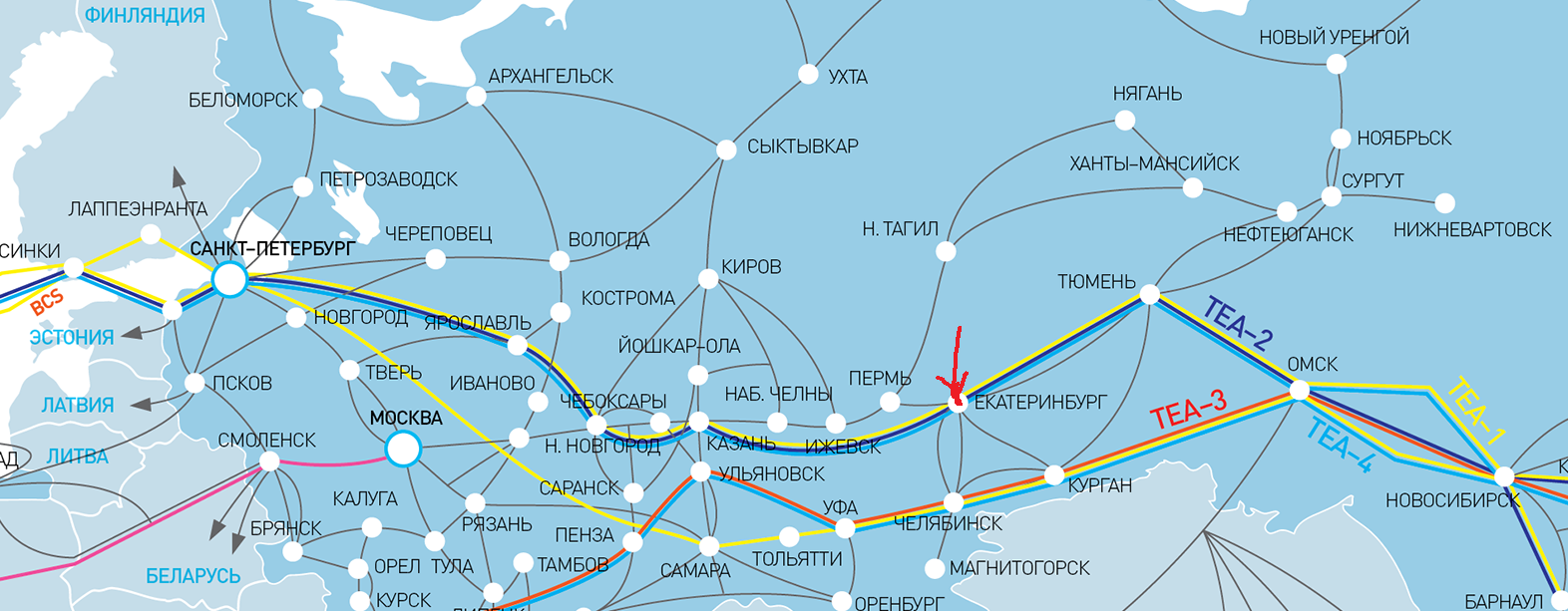 Click on the map of "Rostelecom"
Click on the map of "Rostelecom"For the first time since the facility’s existence, Rostelecom invited journalists to look at telecommunications dungeons. The journalist
Nag.ru was among the lucky
ones.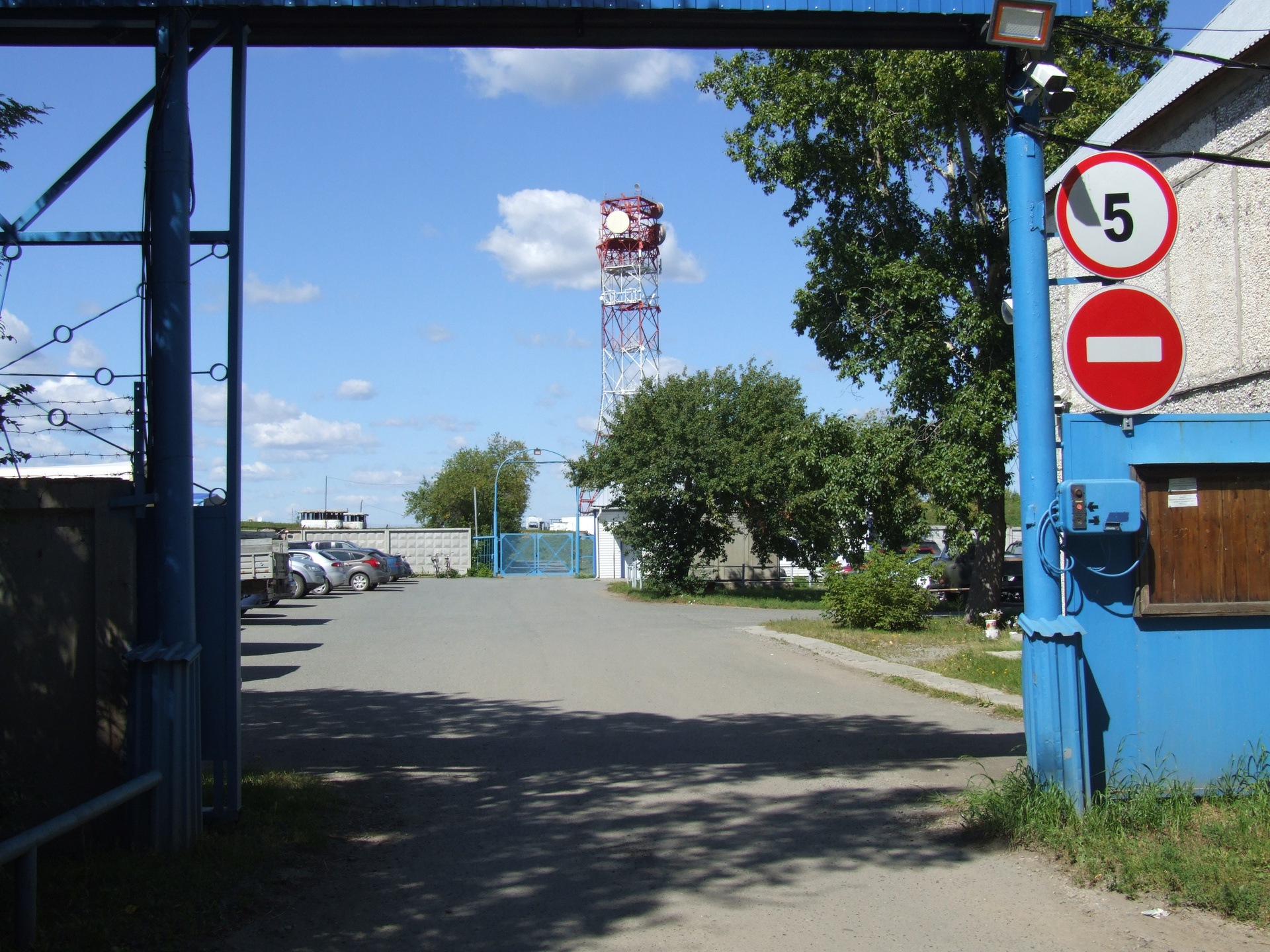
All visitors to the facility are greeted by an unremarkable gate and checkpoint. At first glance, it does not reveal anything here the presence of a high-tech communication facility, stuffed with expensive equipment. Only a communications tower with radio-relay equipment, peeking out from behind barbed wire, indicates that there is a communications facility here.
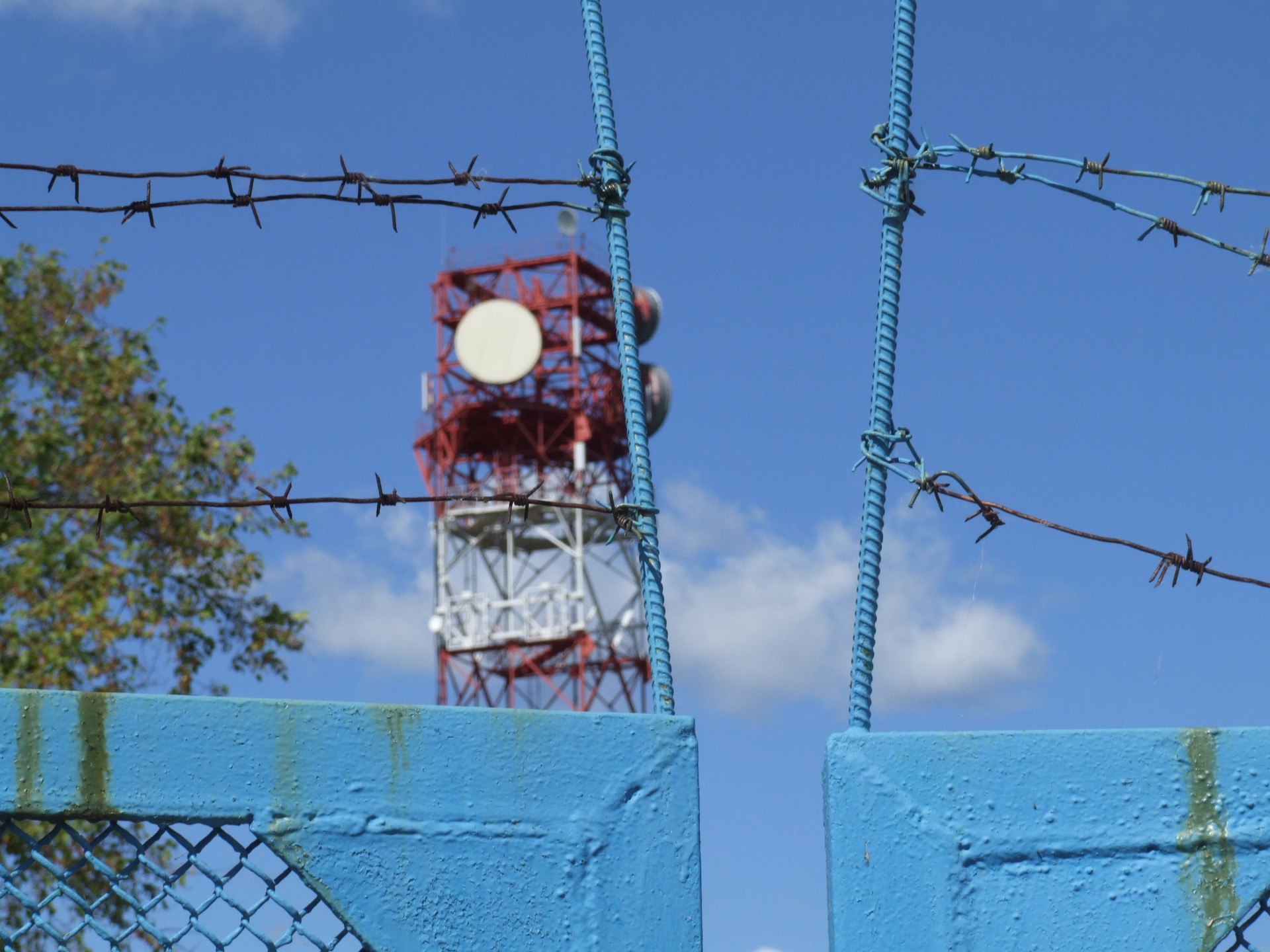
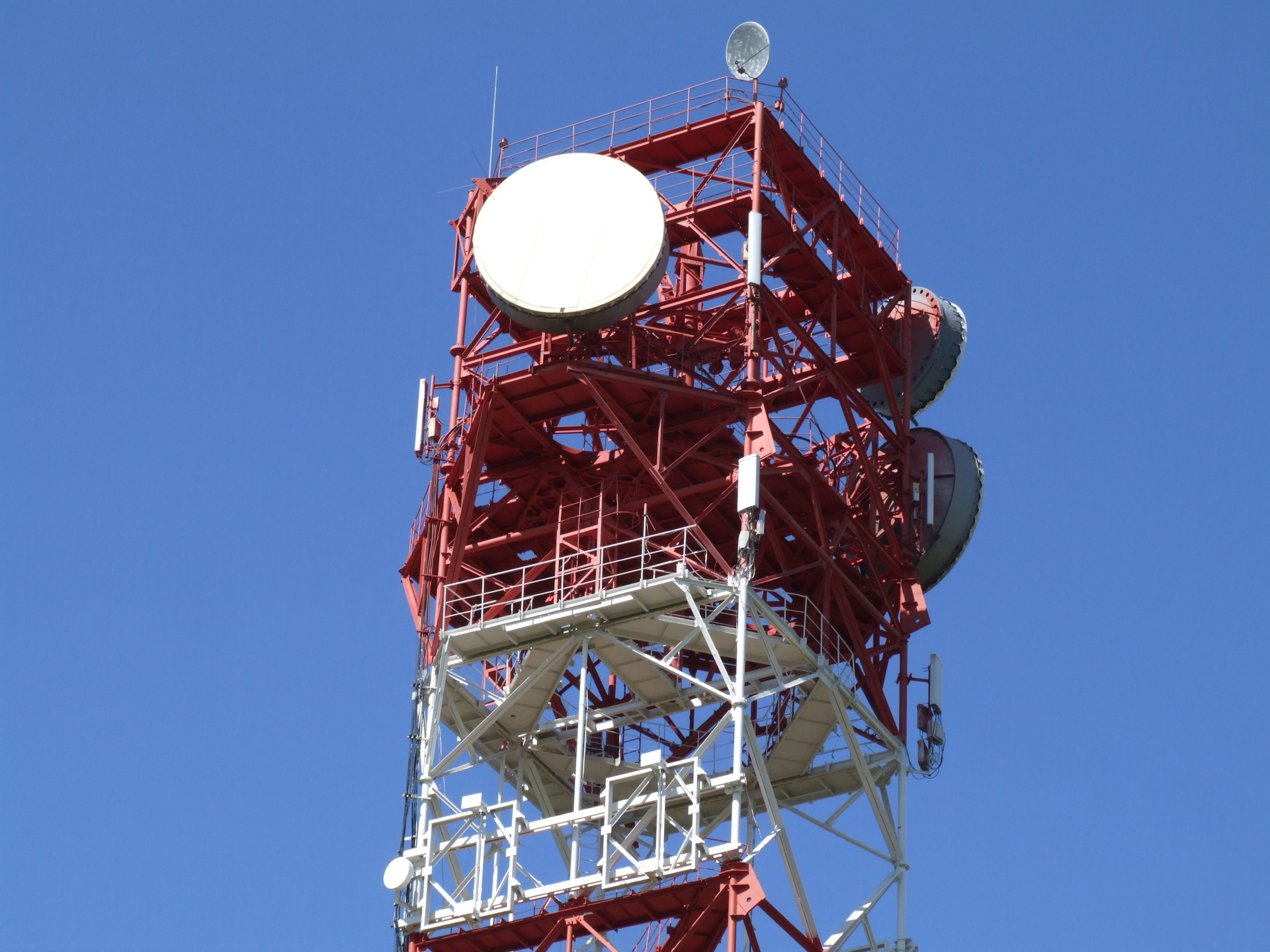
The territory outside the gate also does not reveal secrets stored underground. Unremarkable hills and several buildings. Here, everything looks more like an old production base than a telecommunications infrastructure facility. Only the presence of ventilation outlets on the tops of small hills suggests that there is still something underground.

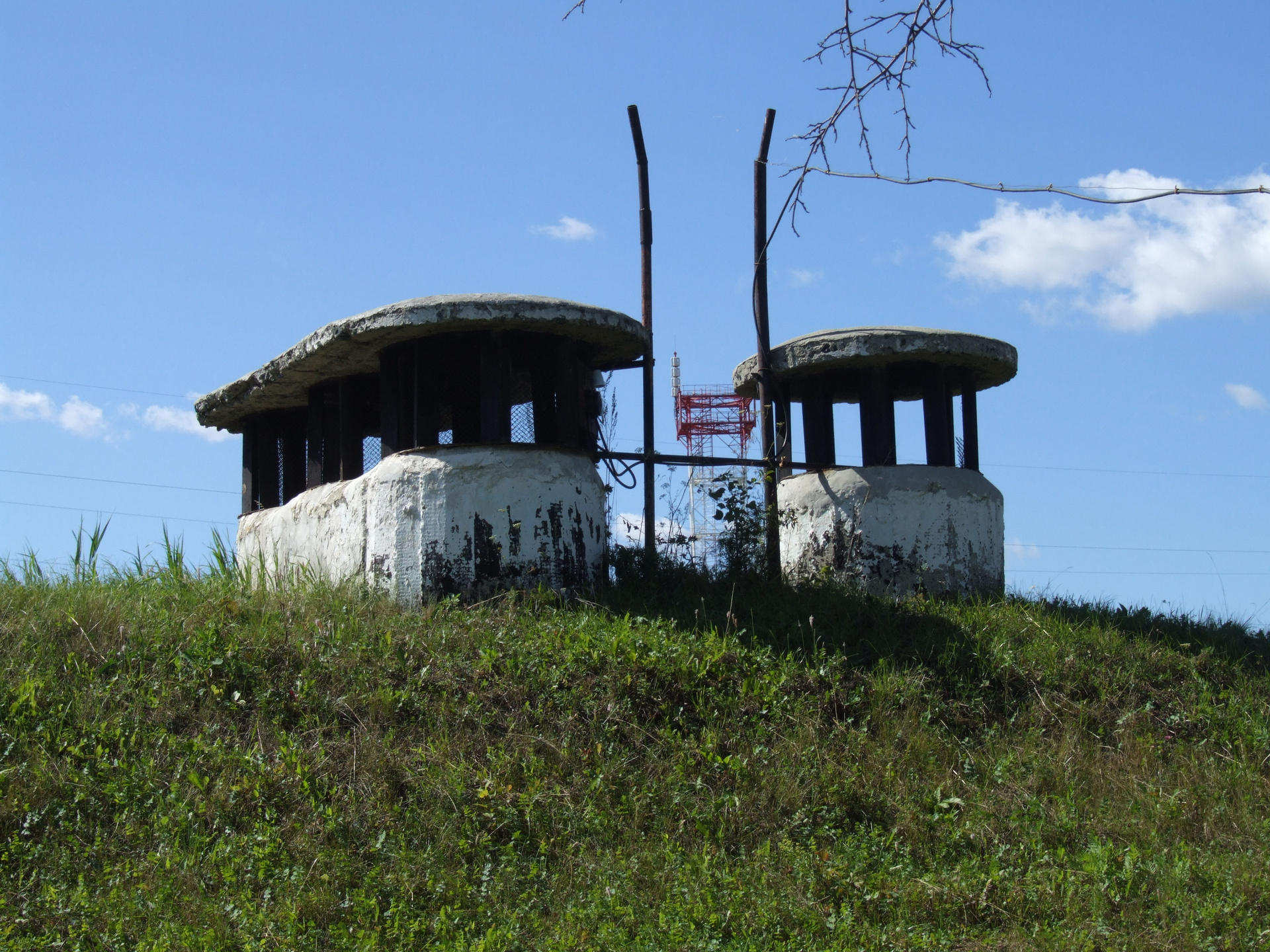
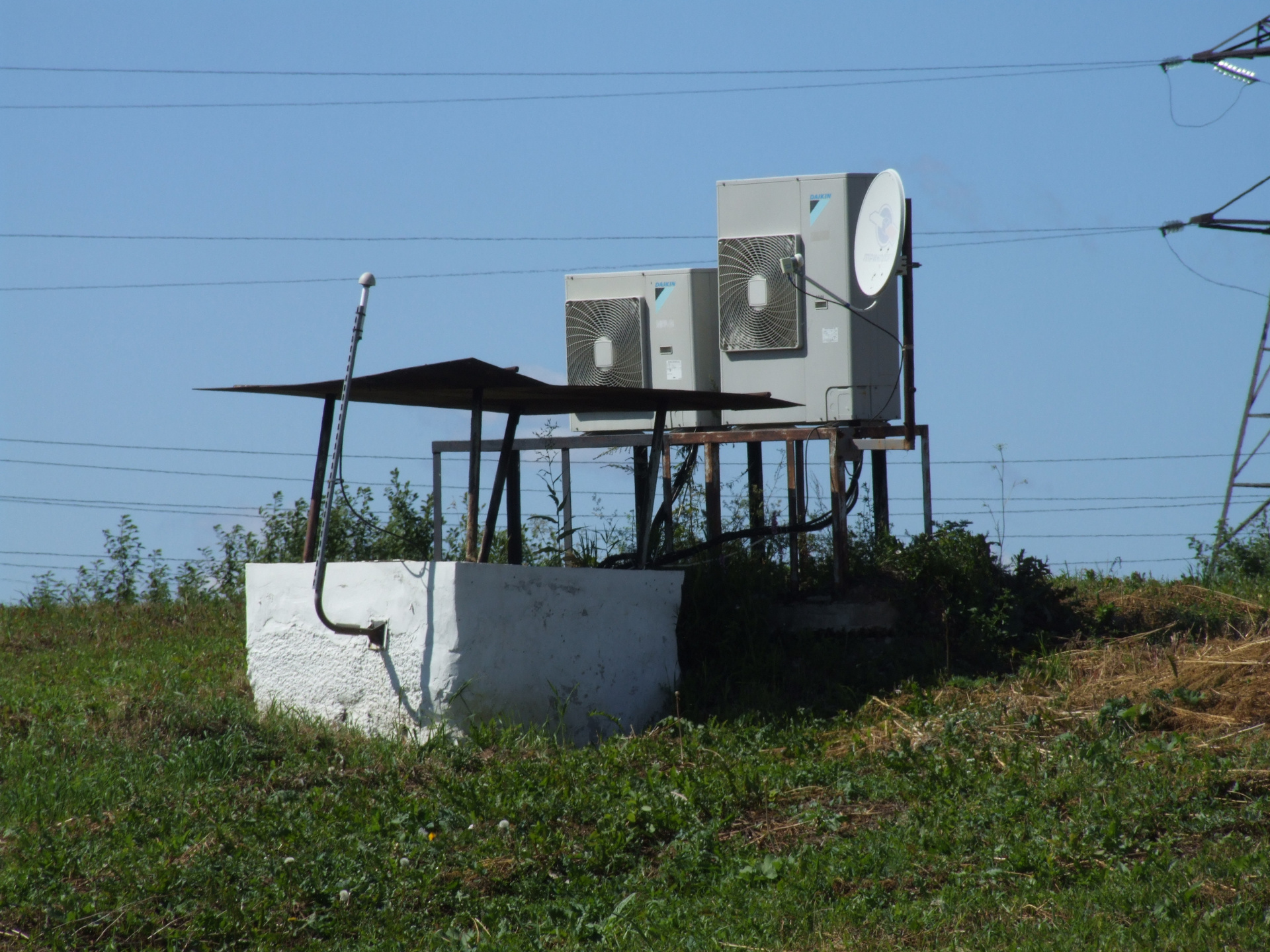
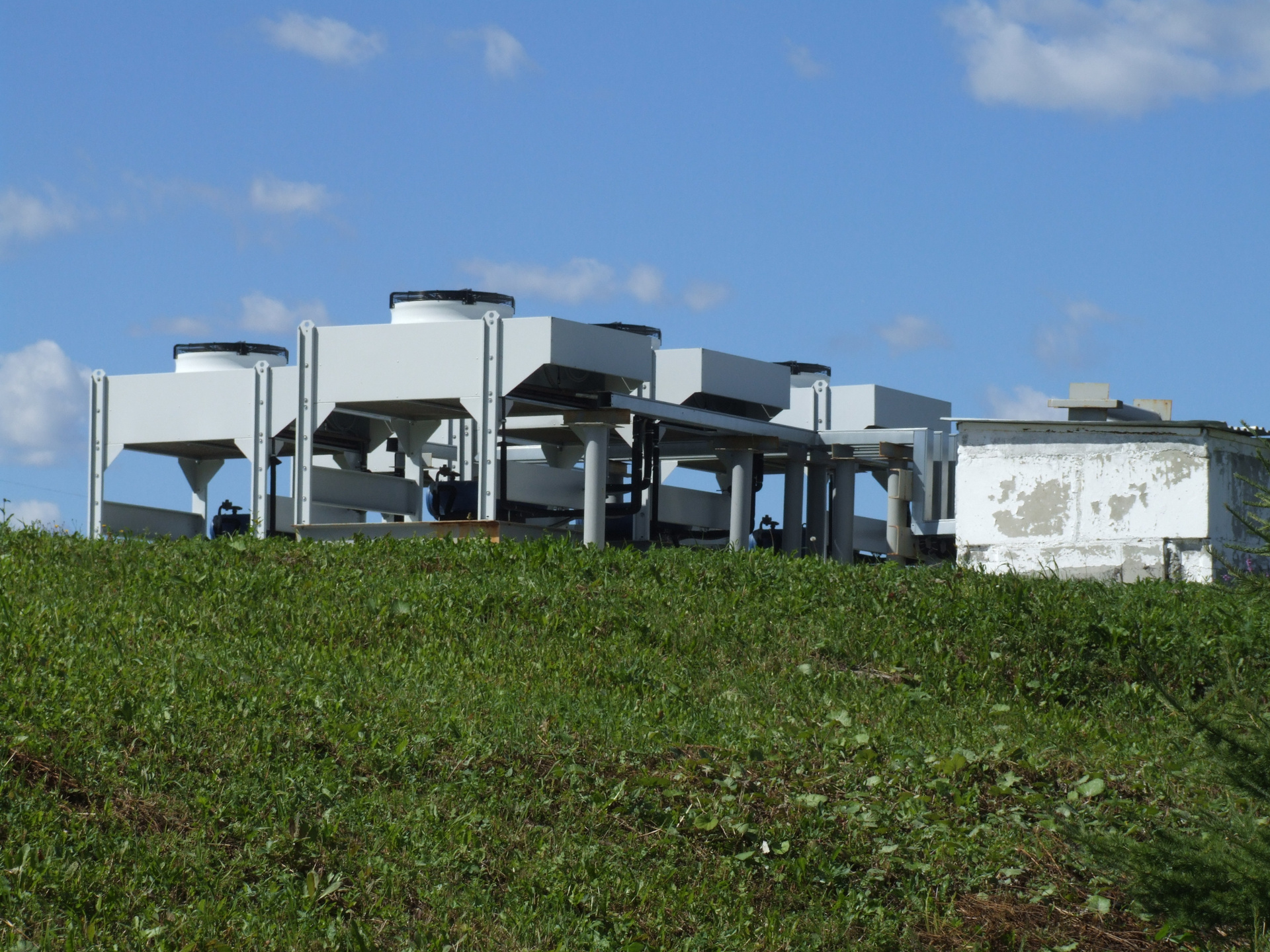
One cannot say that a communication node is located here, through which information flows at a speed of 20 Tbps per second.
Catacombs
At the bottom of the incoming meet thick doors, similar to the gateways that overlap the compartments on the submarines. Here, a similar system and similar doors will meet us more than once. Such security measures do not seem superfluous when you realize that everything was built with the expectation of a “hot” outcome of the “cold war”.
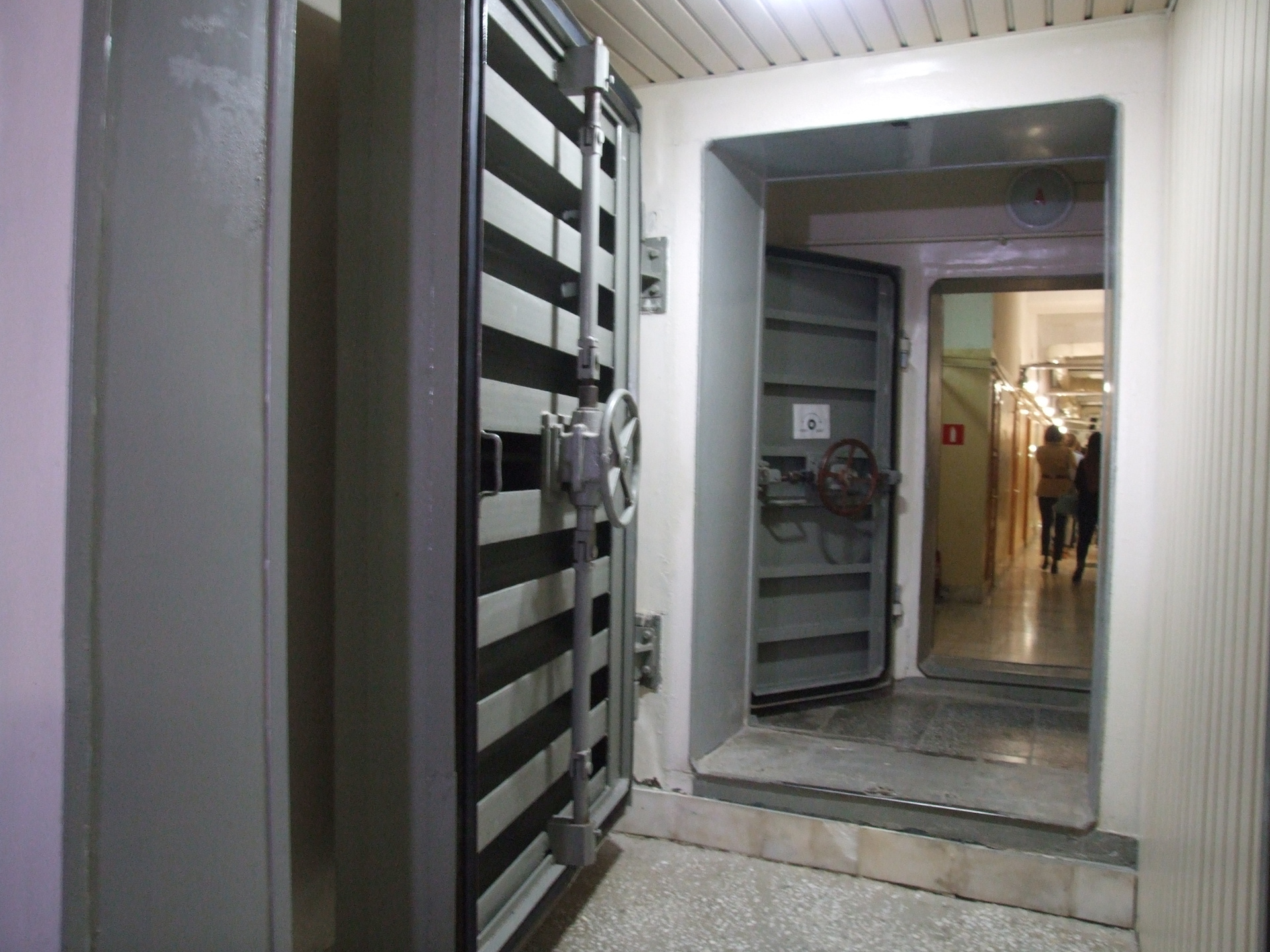
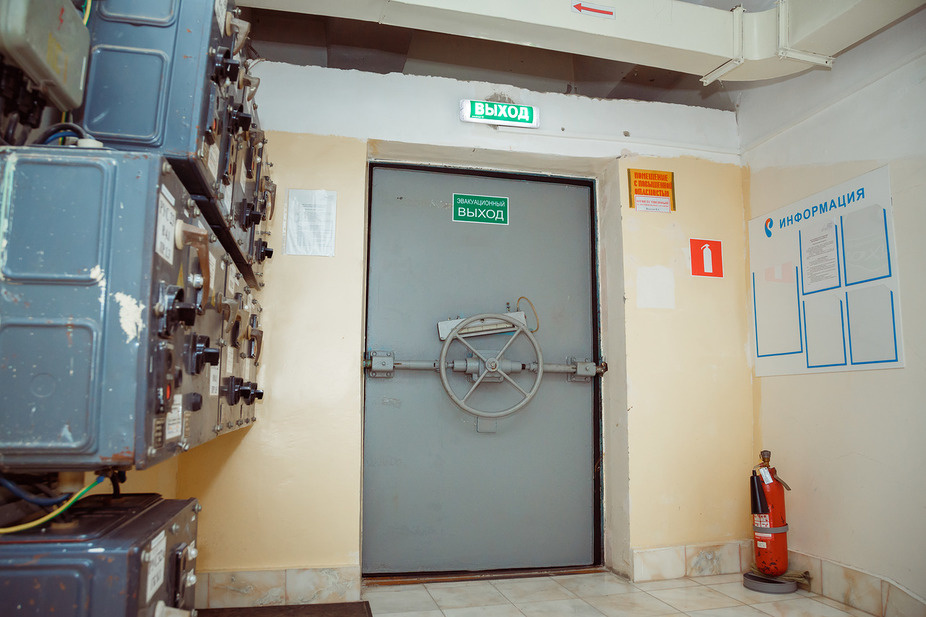
Corridors with dim lights seem endless and lead to rooms where Internet traffic, television signal and telephone calls ply through wires and fiber-optic cable. Here you can easily get lost.
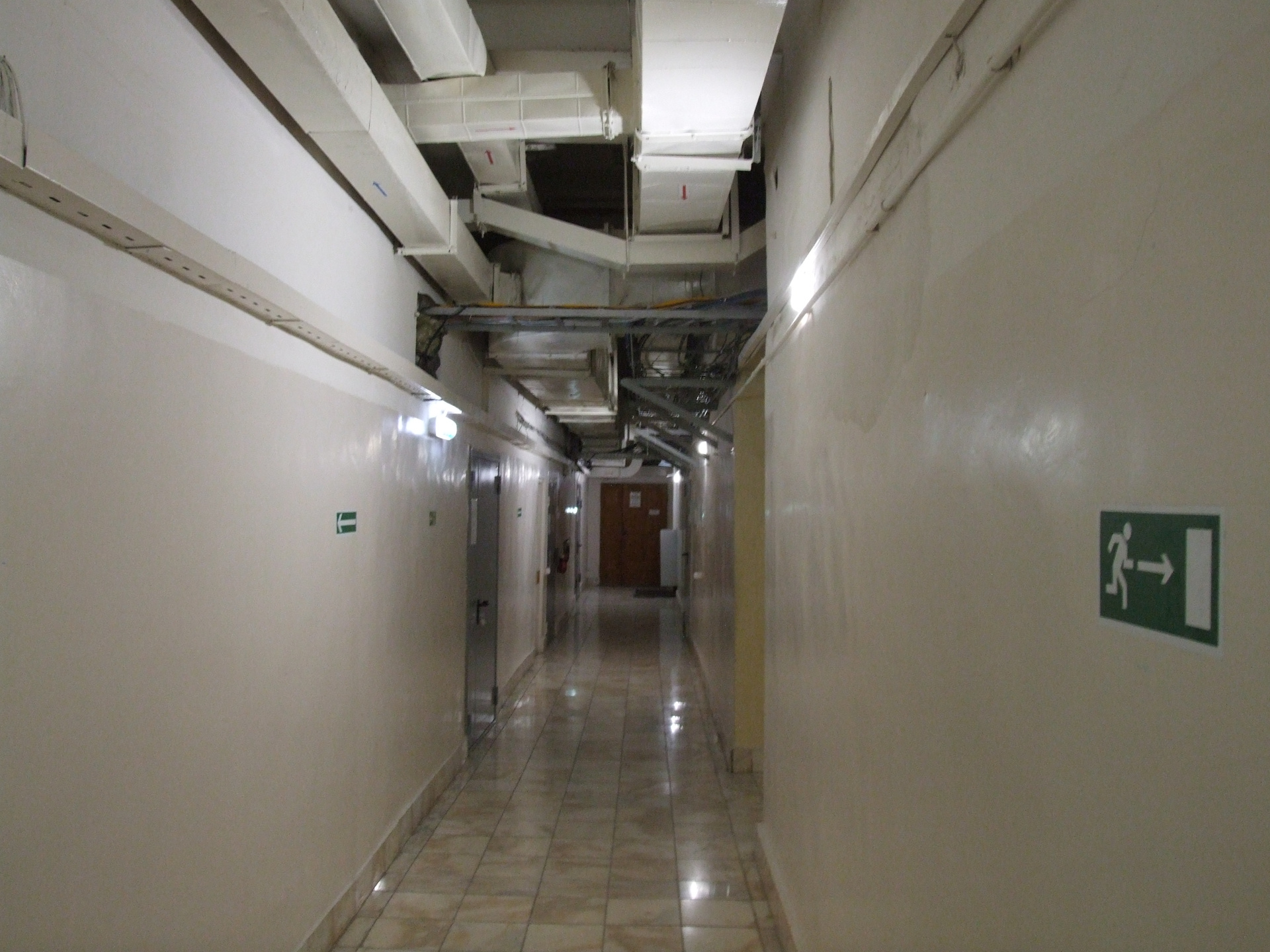
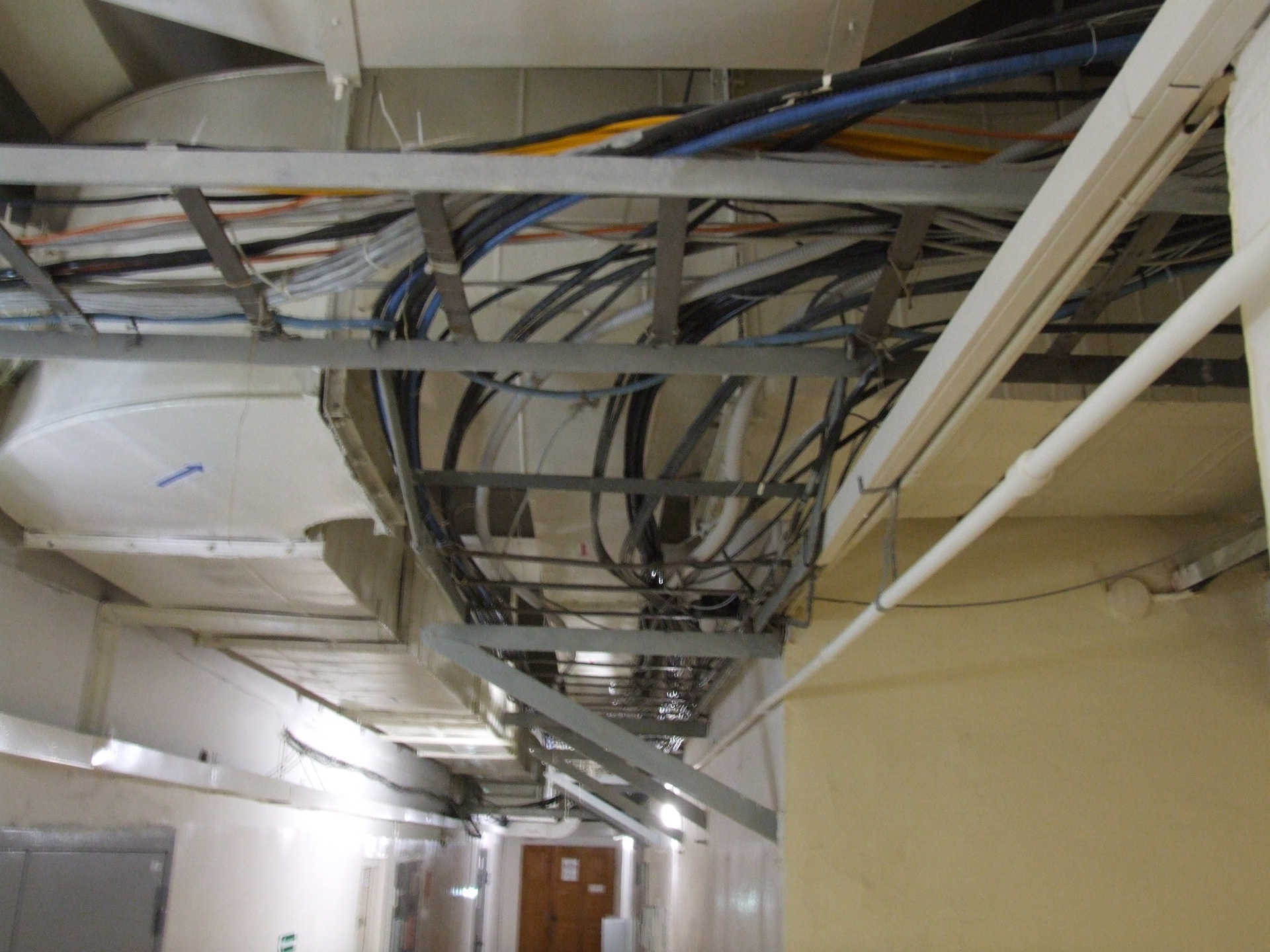
The Shchelkun communications center is unique in that modern telecommunications equipment is adjacent to the museum exhibits, which are still functioning and, in some cases, even used for official purposes.
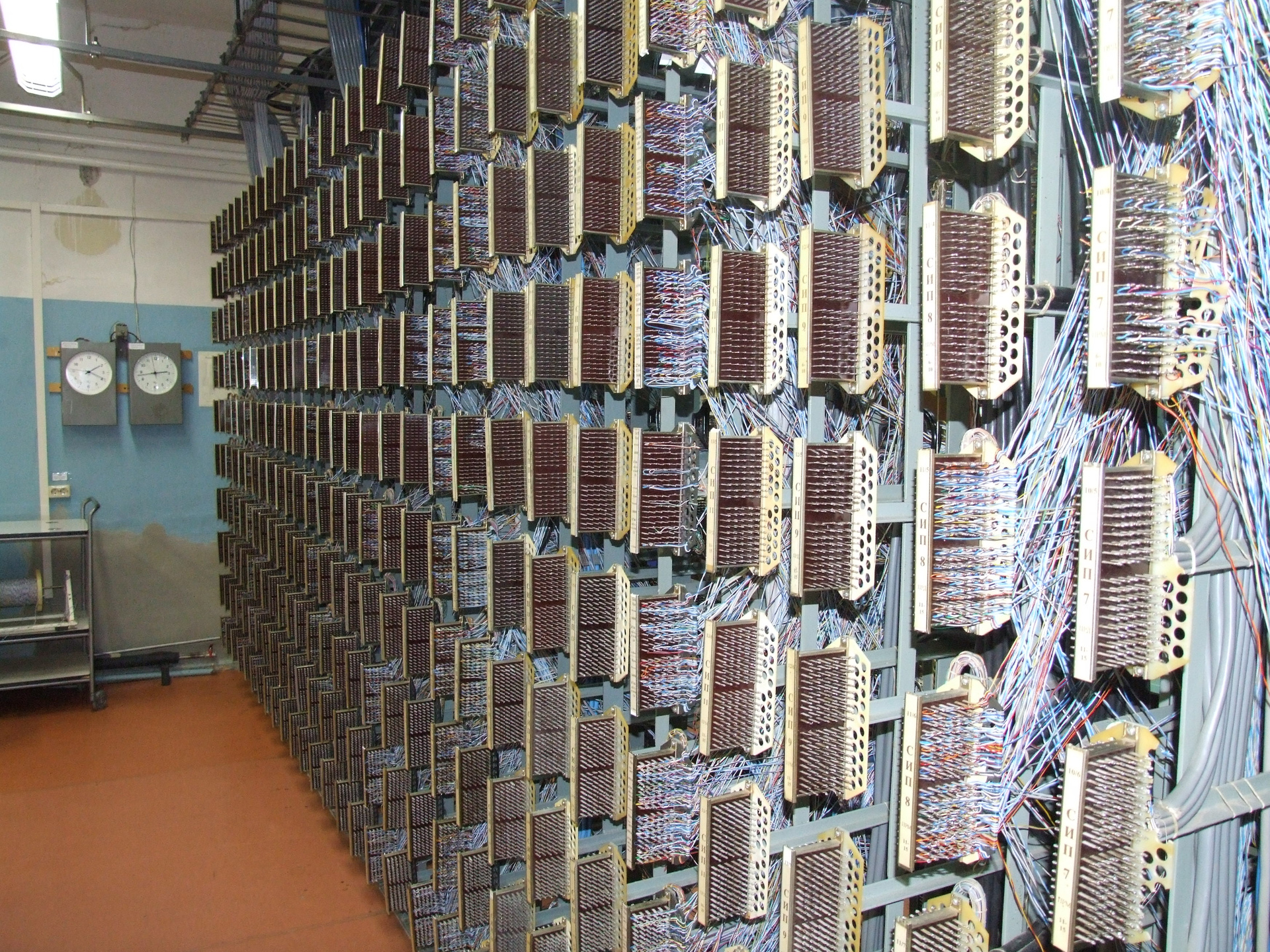
Here, for example, stands with equipment that was once used for broadcasting abroad. This “iron” was a sort of mouthpiece of Soviet propaganda in different parts of the world.

Here is the equipment production of the GDR. Racks on the three hundred channels that are still used to service military units.
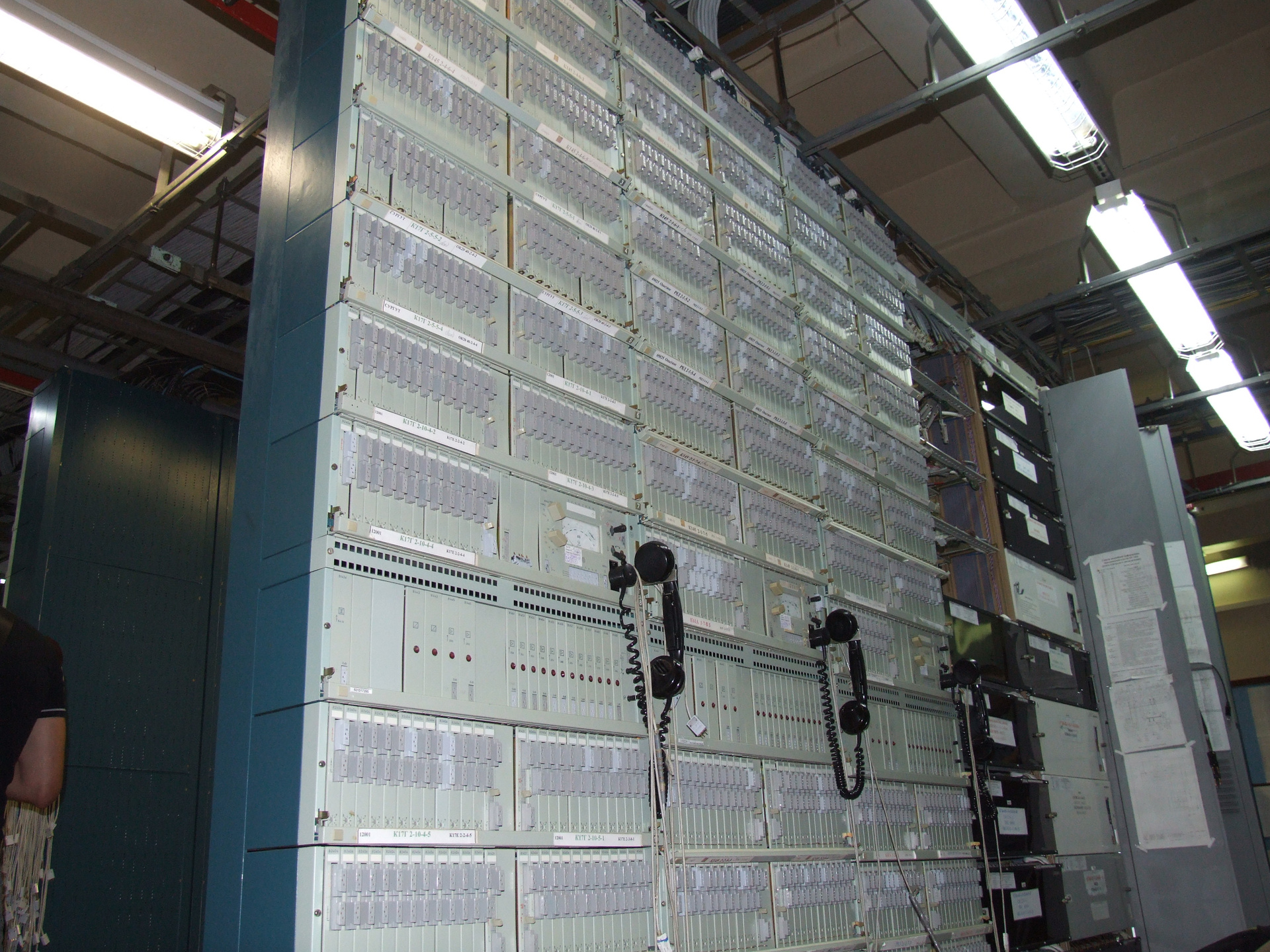
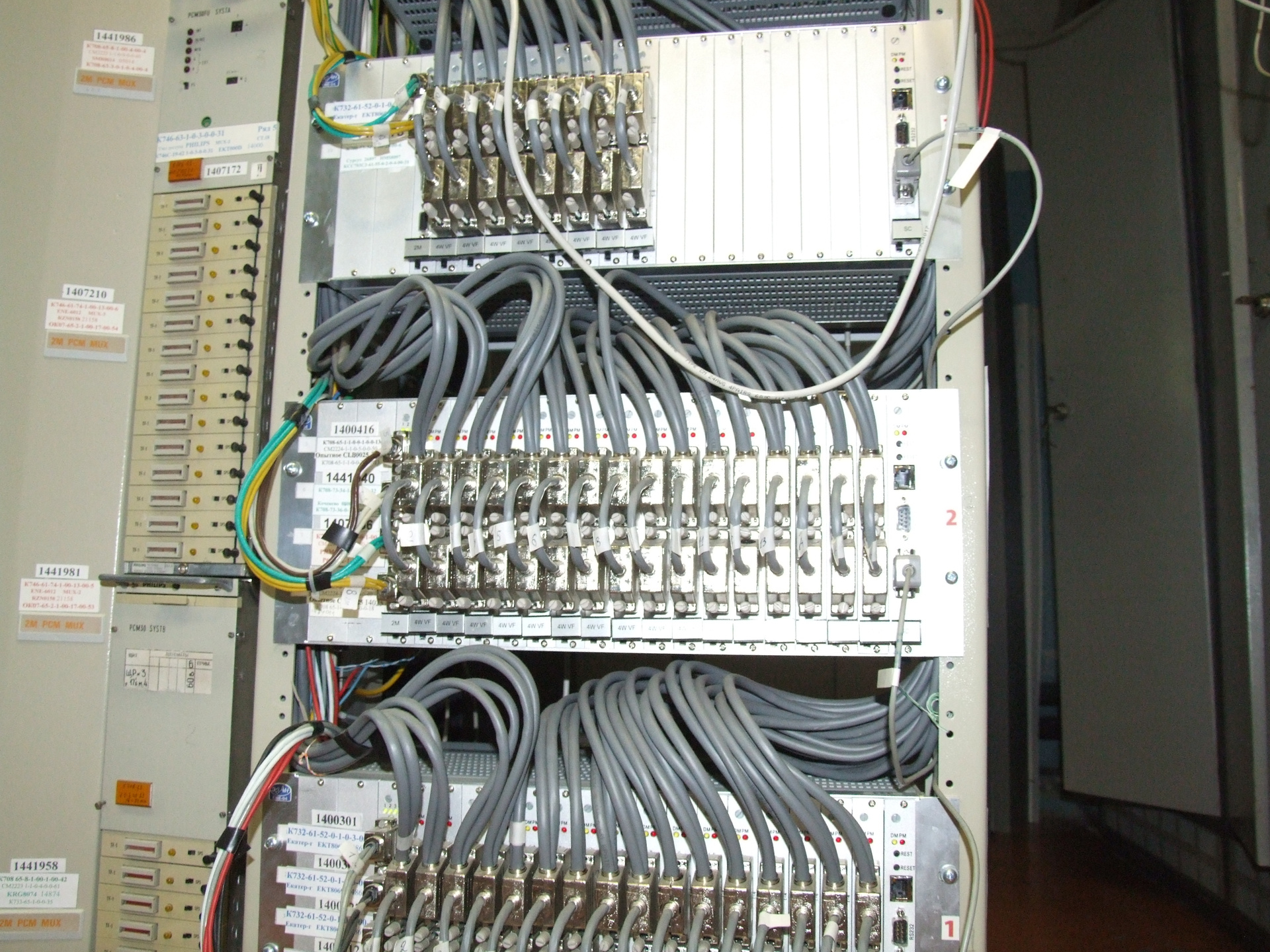
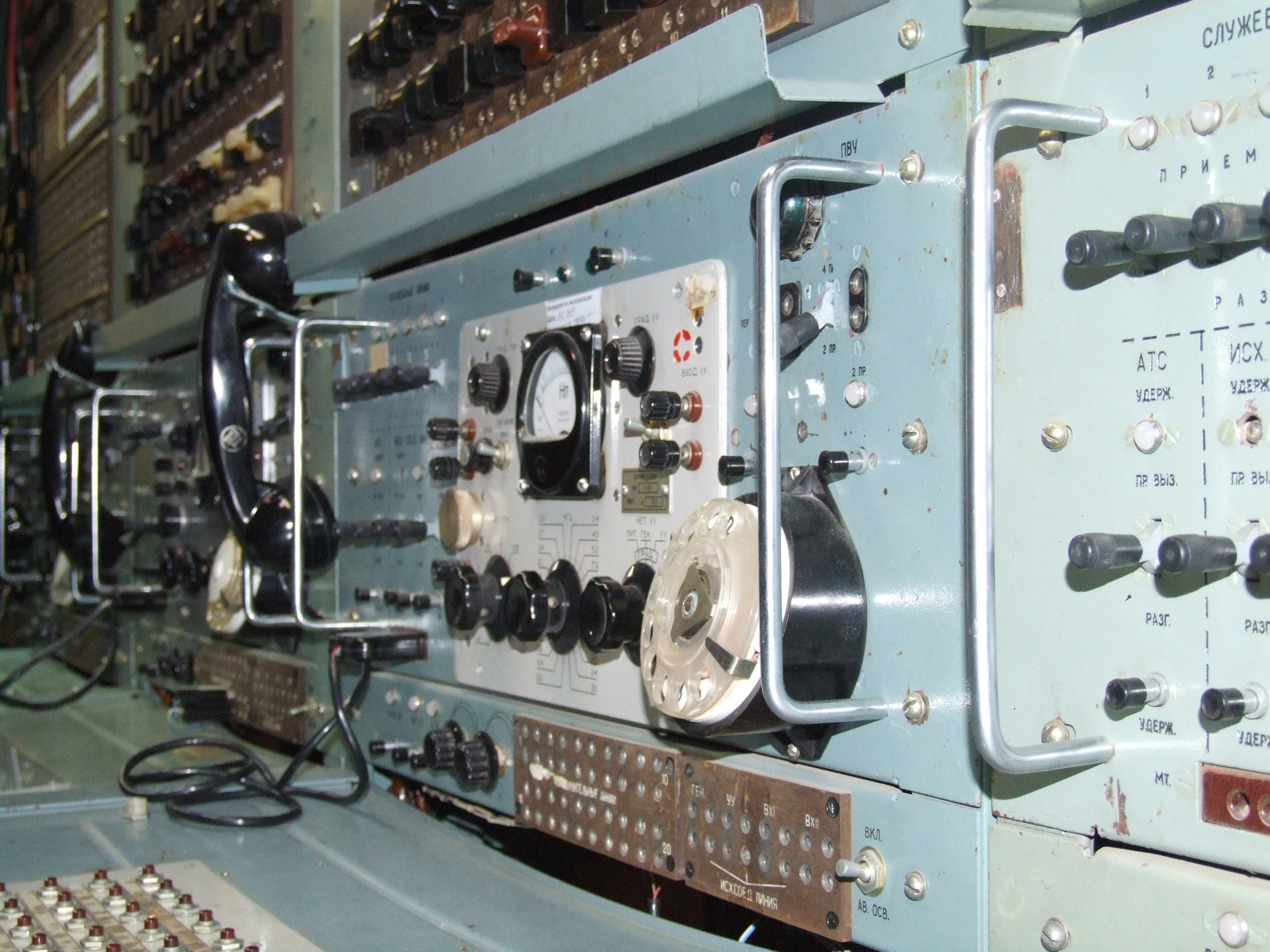
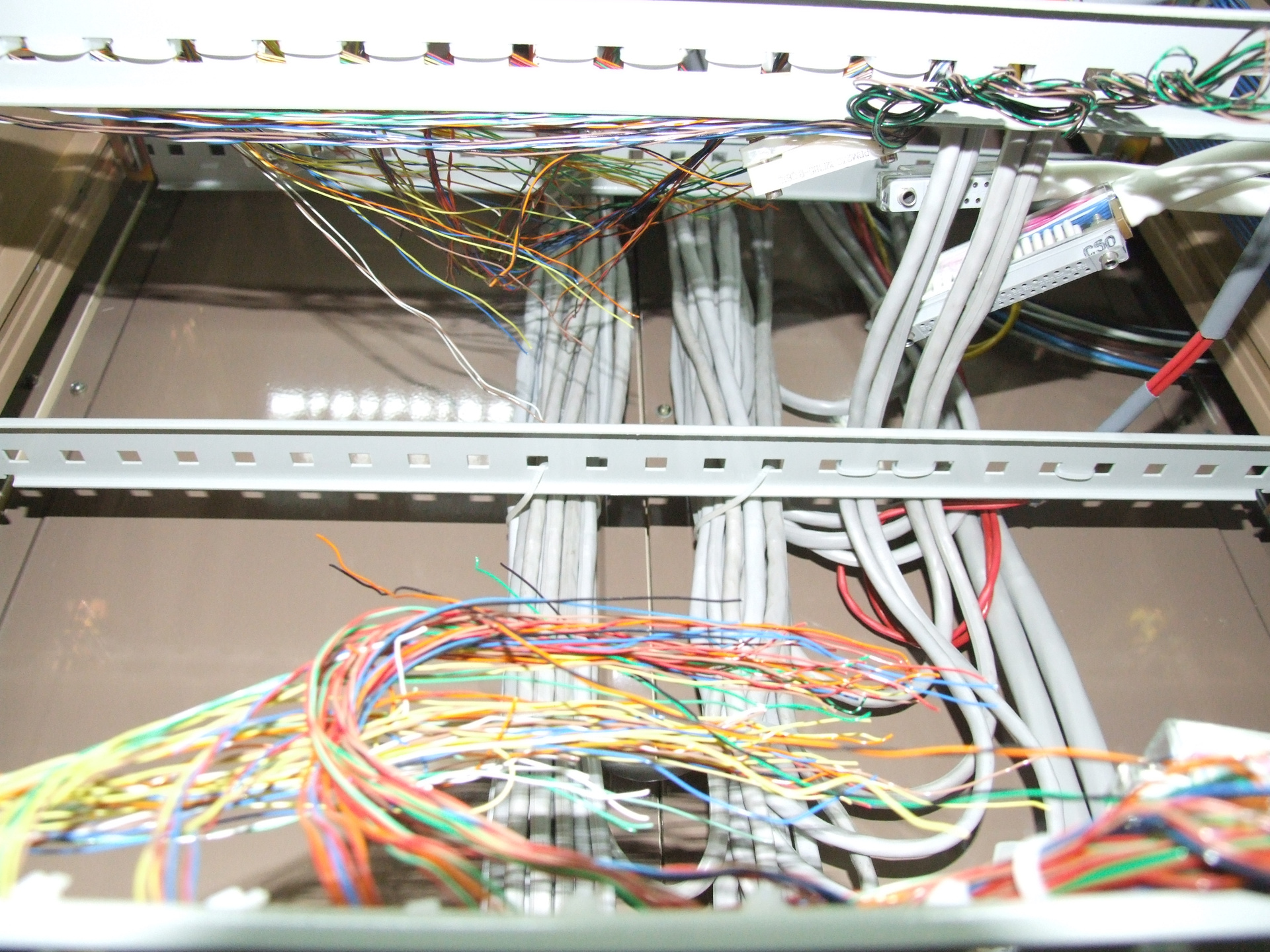
Work at the facility is carried out in Moscow time, as well as at other similar Rostelecom facilities in other regions. This is done to avoid confusion between regions during various staff and abnormal situations.
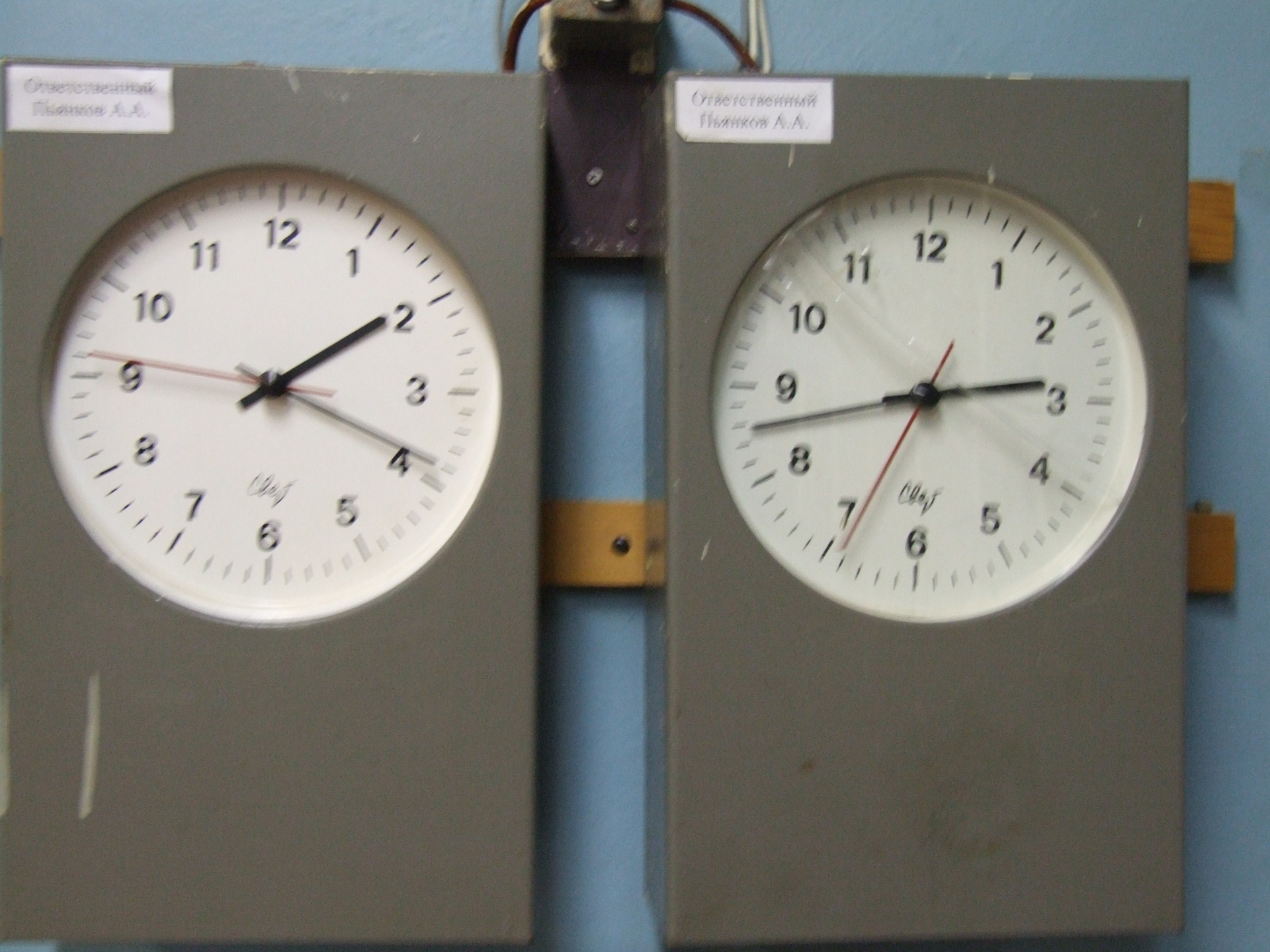
Telegraph
It is difficult to imagine, but in the catacombs of Schelkun the telegraph communication is preserved and functioning. In the room, which is literally imbued with the spirit of the USSR, it is established that the museum equipment, nevertheless, copes well with its tasks.
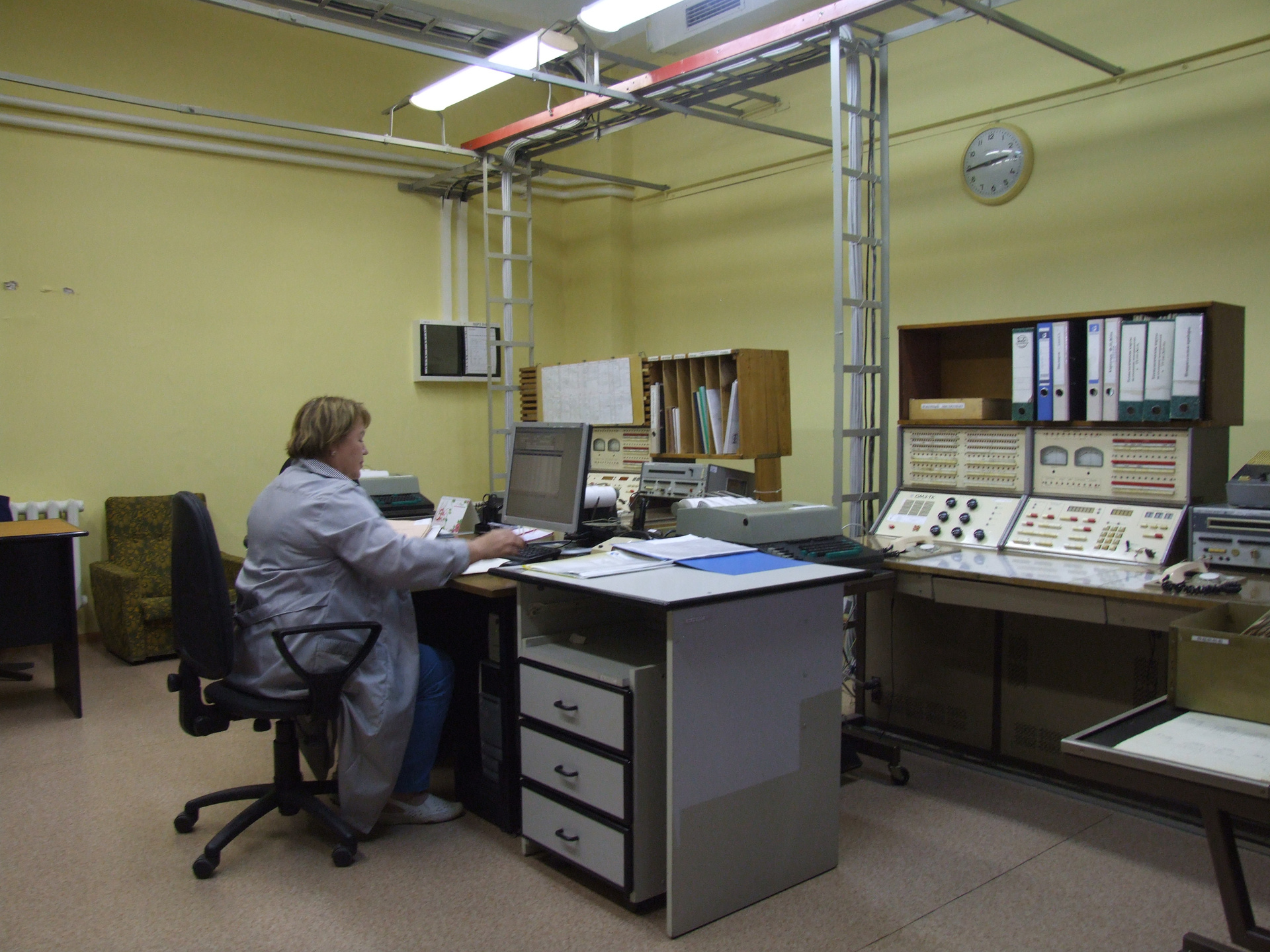
There are several remote controls in the room through which you can track the status of any telegraph channel and even send a service telegram. Basically, telegrams are now used by the state. We did not disclose more detailed information about the purposes for which the state uses telegrams.
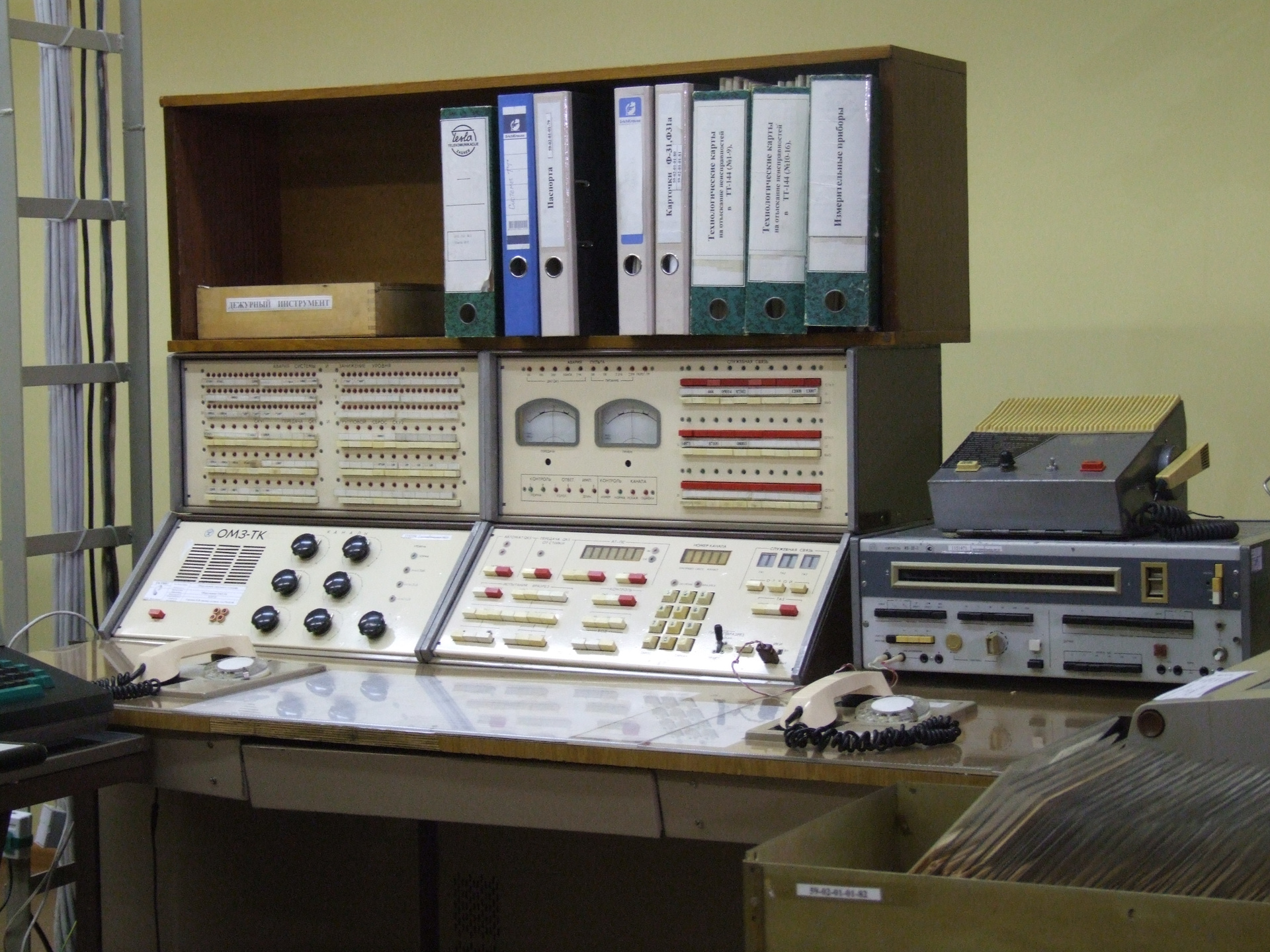
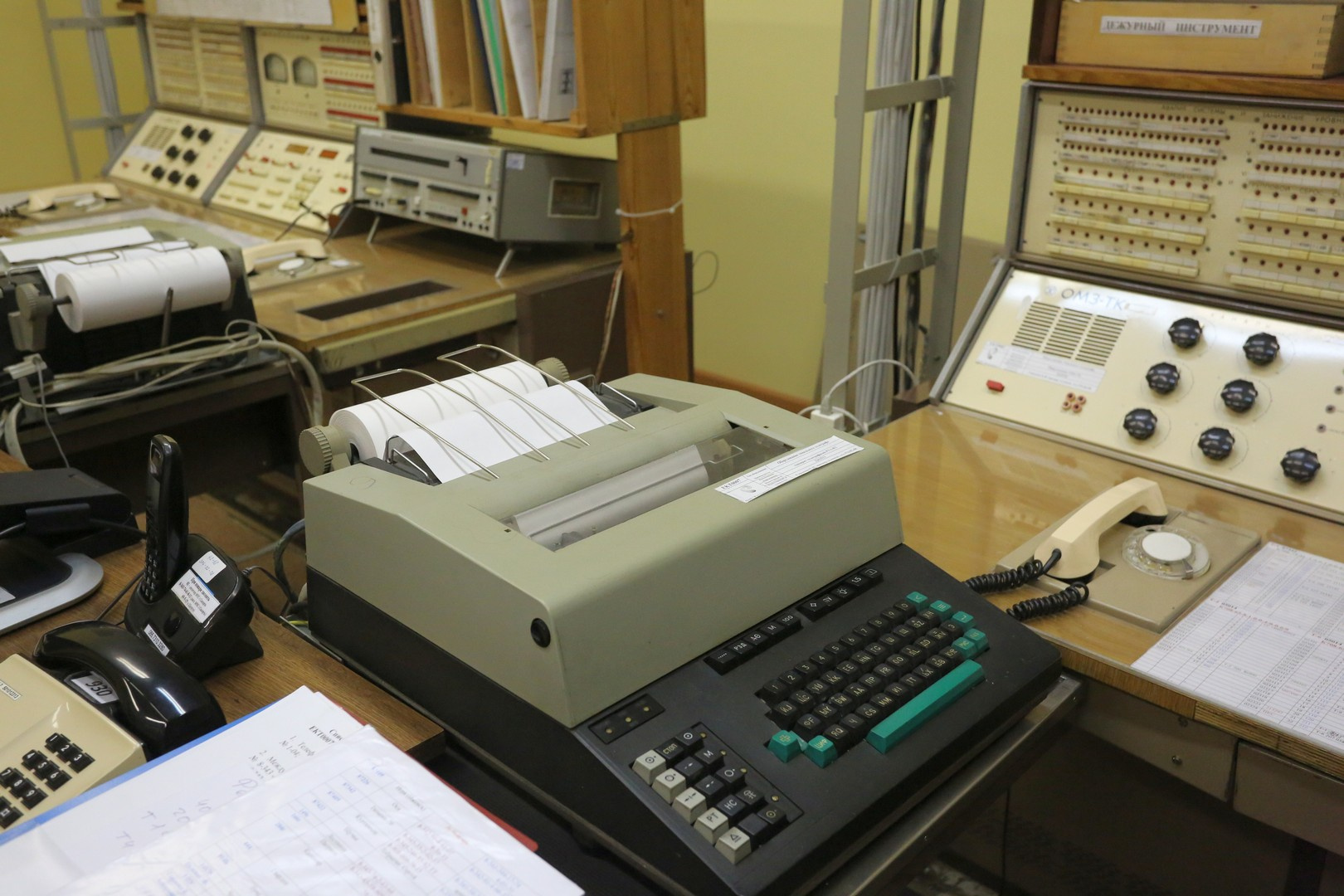
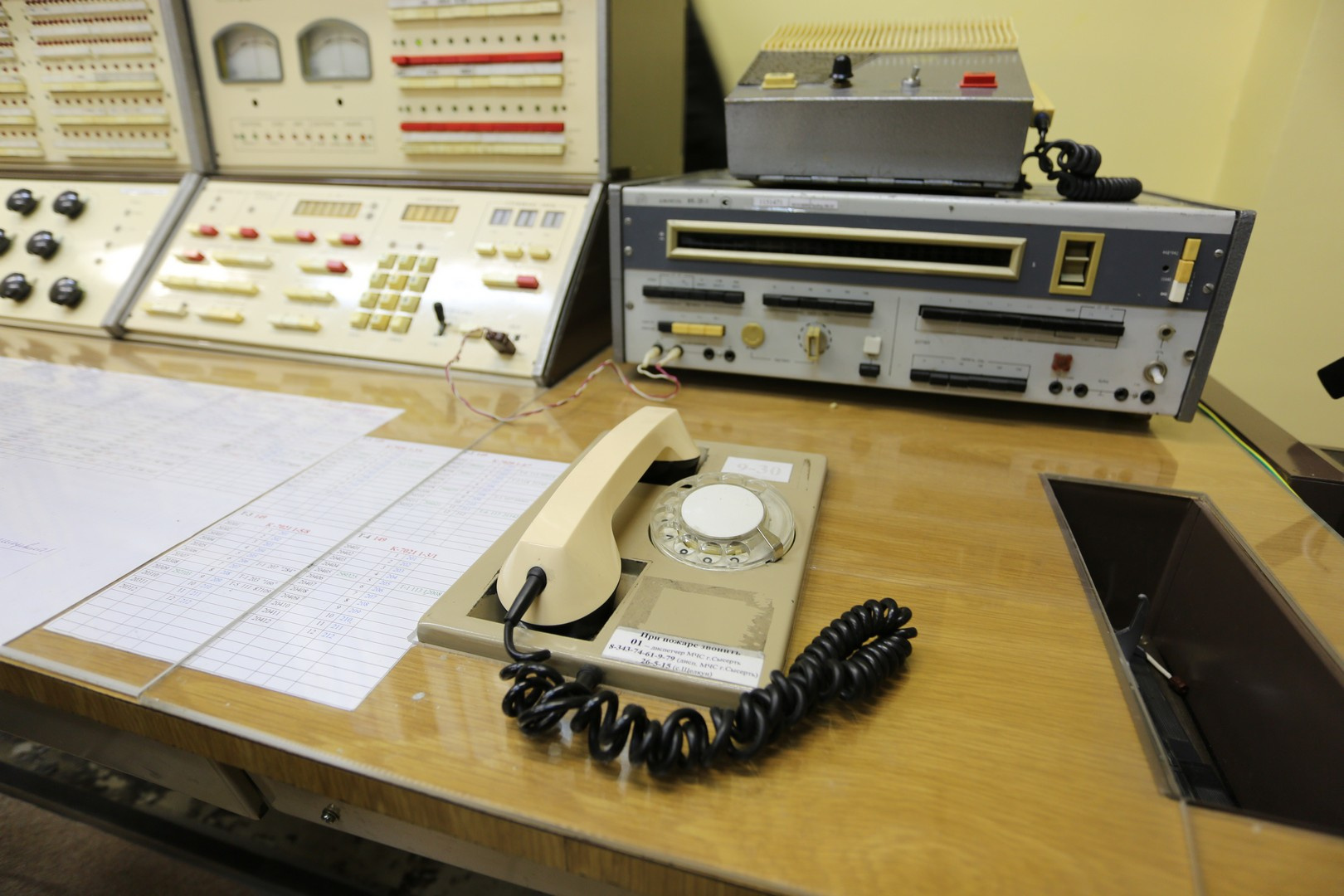
Conditioning
Telecommunication equipment emits a large amount of heat that needs to be removed somewhere, and also to provide an approach of cold air in order to maintain the optimum temperature in the premises of the communication center.
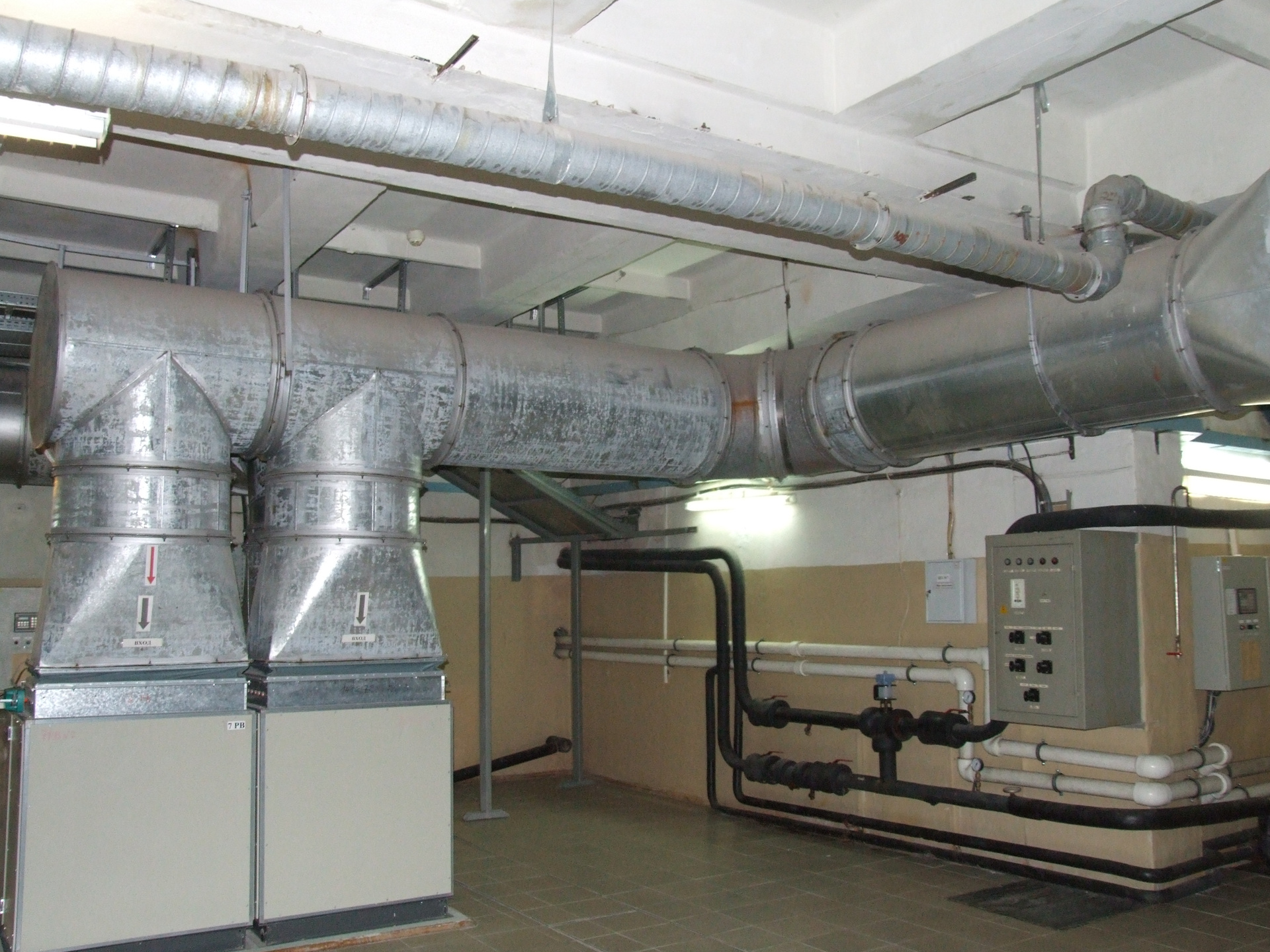
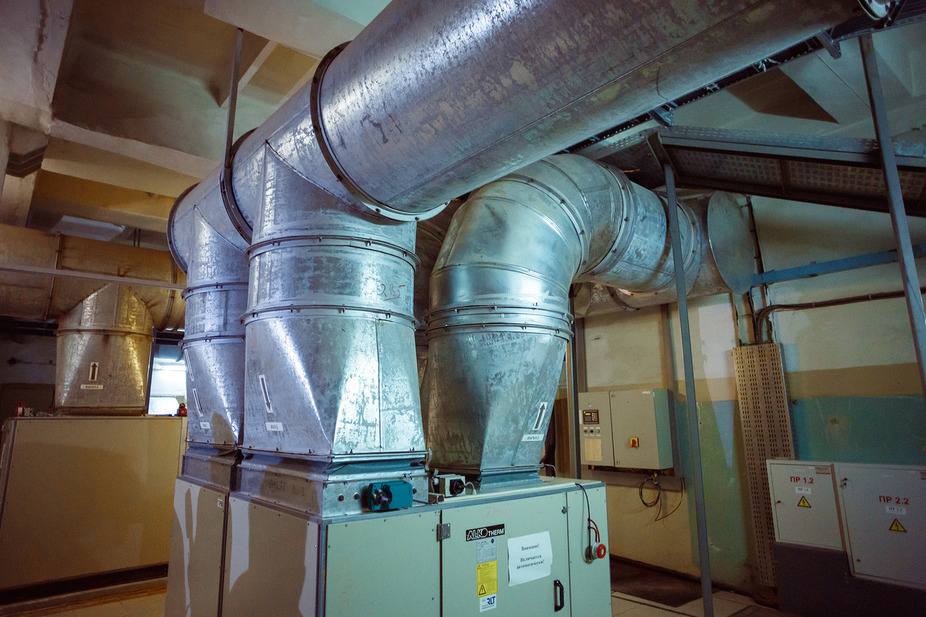
Pipes take heat from the premises where the communication equipment is located, and in return there comes cooled air. The power of such an installation is 50 kilowatts. Also, on the Nutcracker installed steam generation system, which monitors the humidity and climate control system. All premises at the communications center are controlled by two parameters to which the equipment is critical - temperature and humidity.

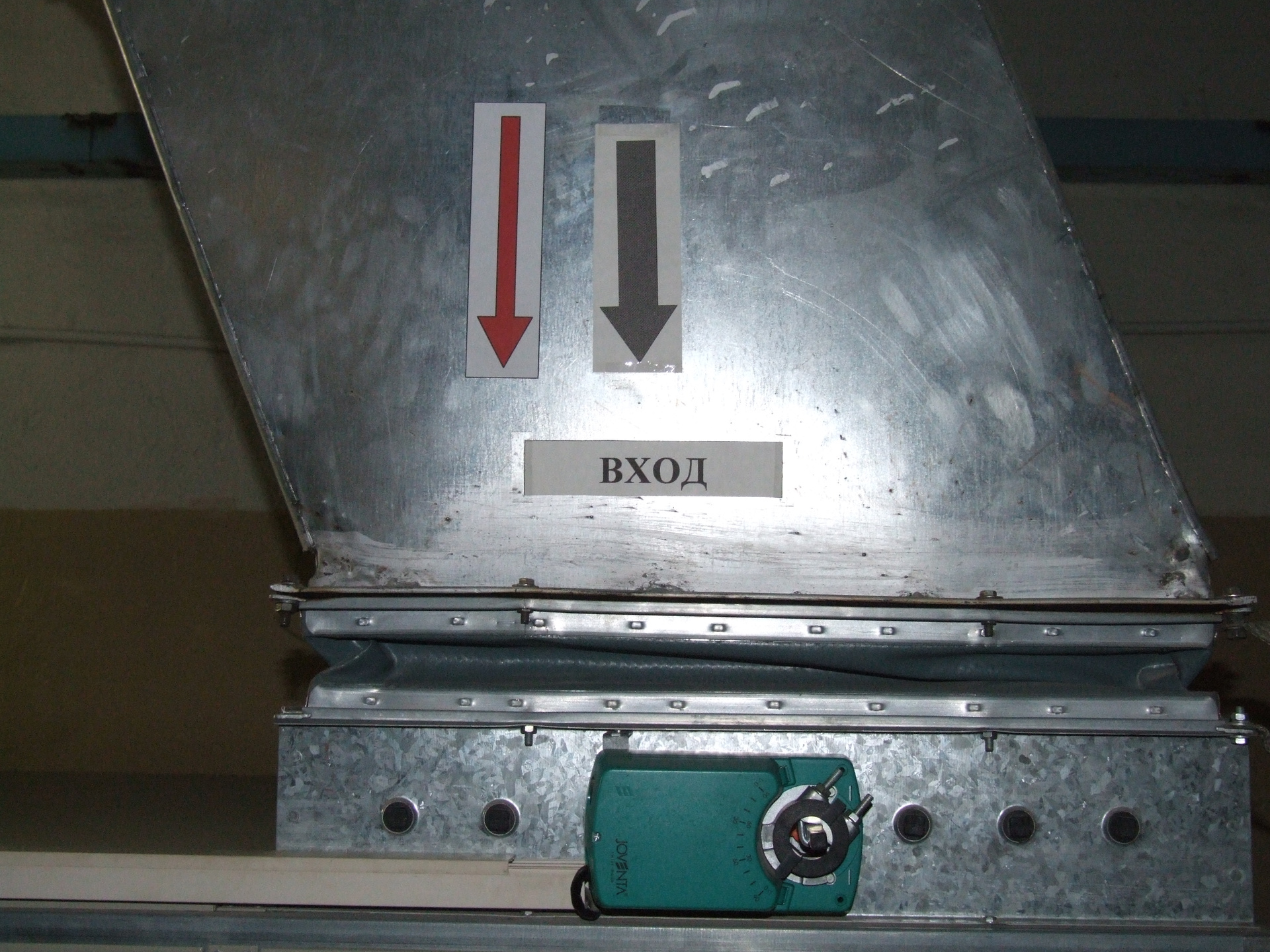
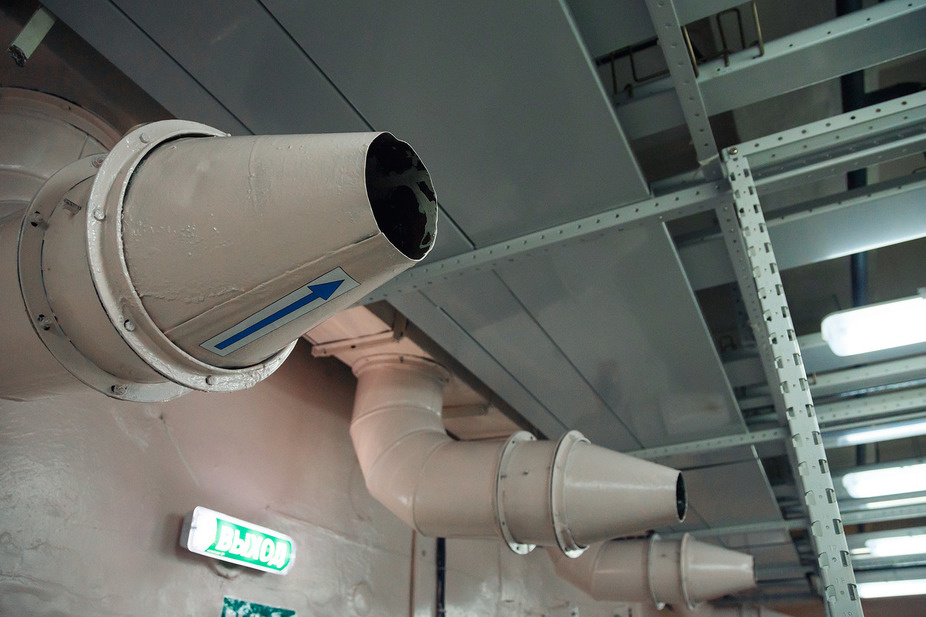
If the humidity is below normal, special steam will be supplied to all rooms. 60% humidity is the maximum allowable value at which no short circuit occurs.
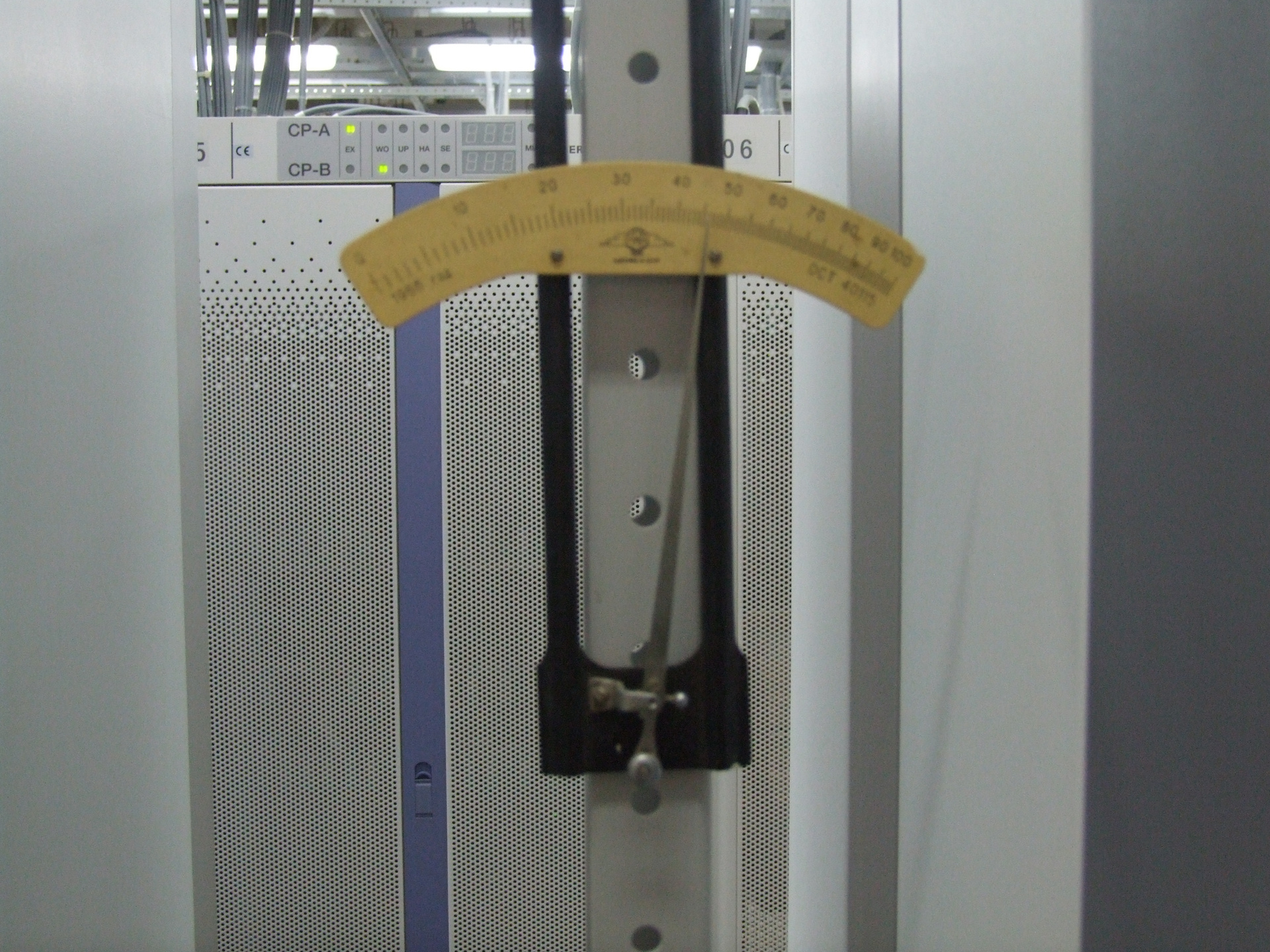
More than a ton of ethylene glycol circulates through these pipes, which enters the air conditioners in all the premises of the communication center. This is one of the fundamental cooling elements for the entire building.

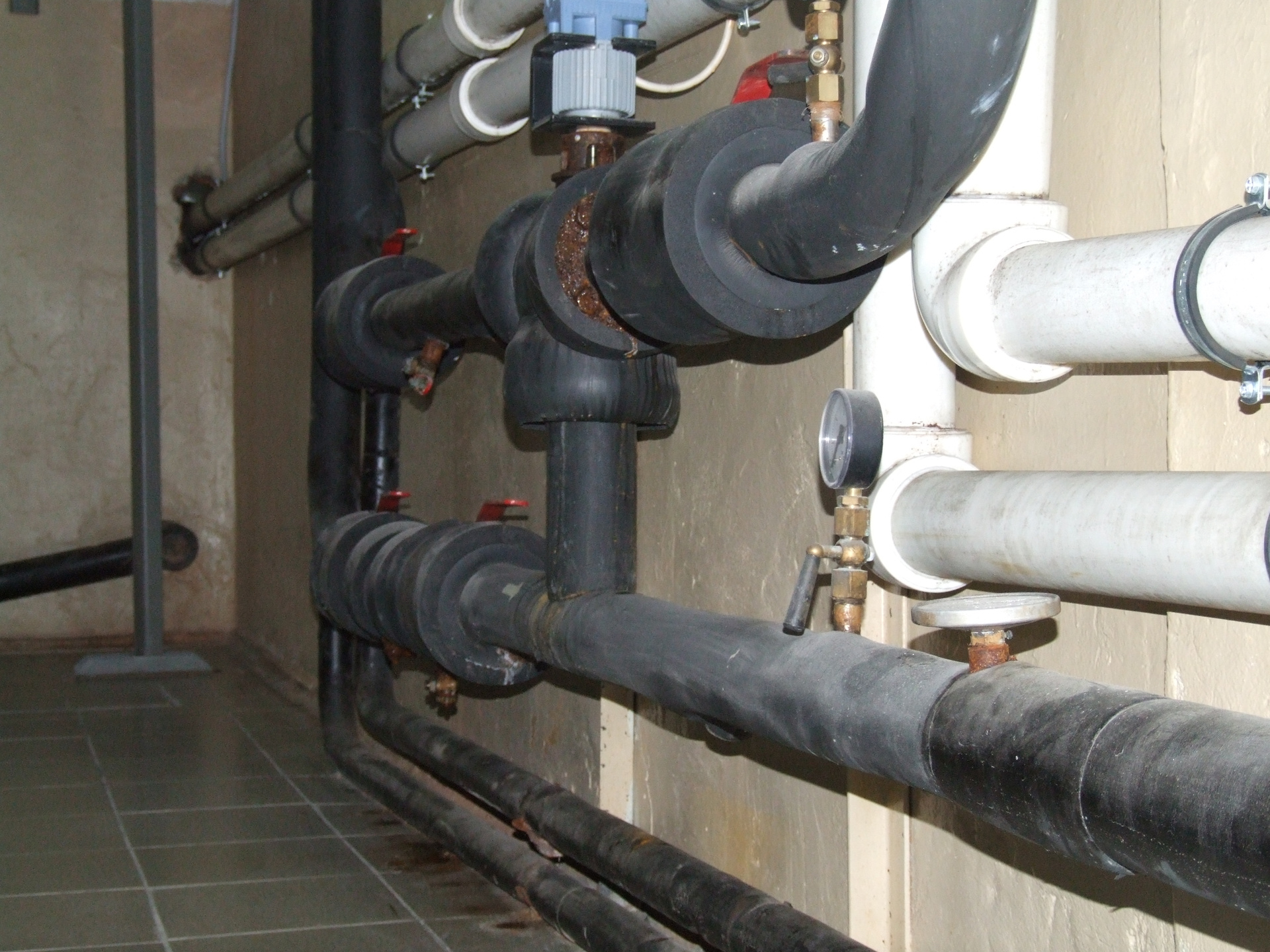
In the next room are carbon filters that will clean the air coming from the outside, in case of infection.

Telephony
Following further along the dark corridors, we find ourselves in a spacious and bright room, stuffed with the latest equipment, which serves to provide long-distance and international calls.
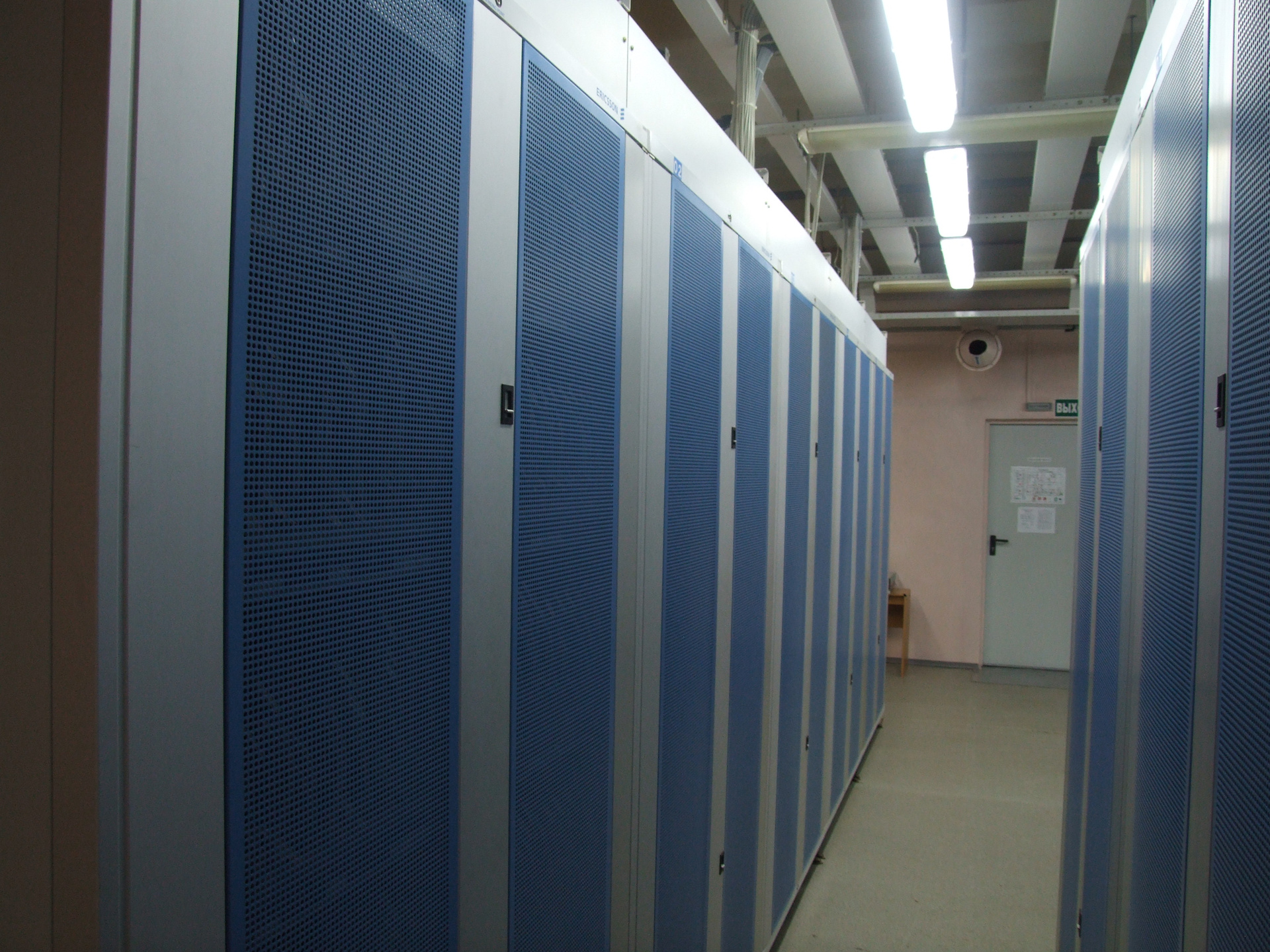

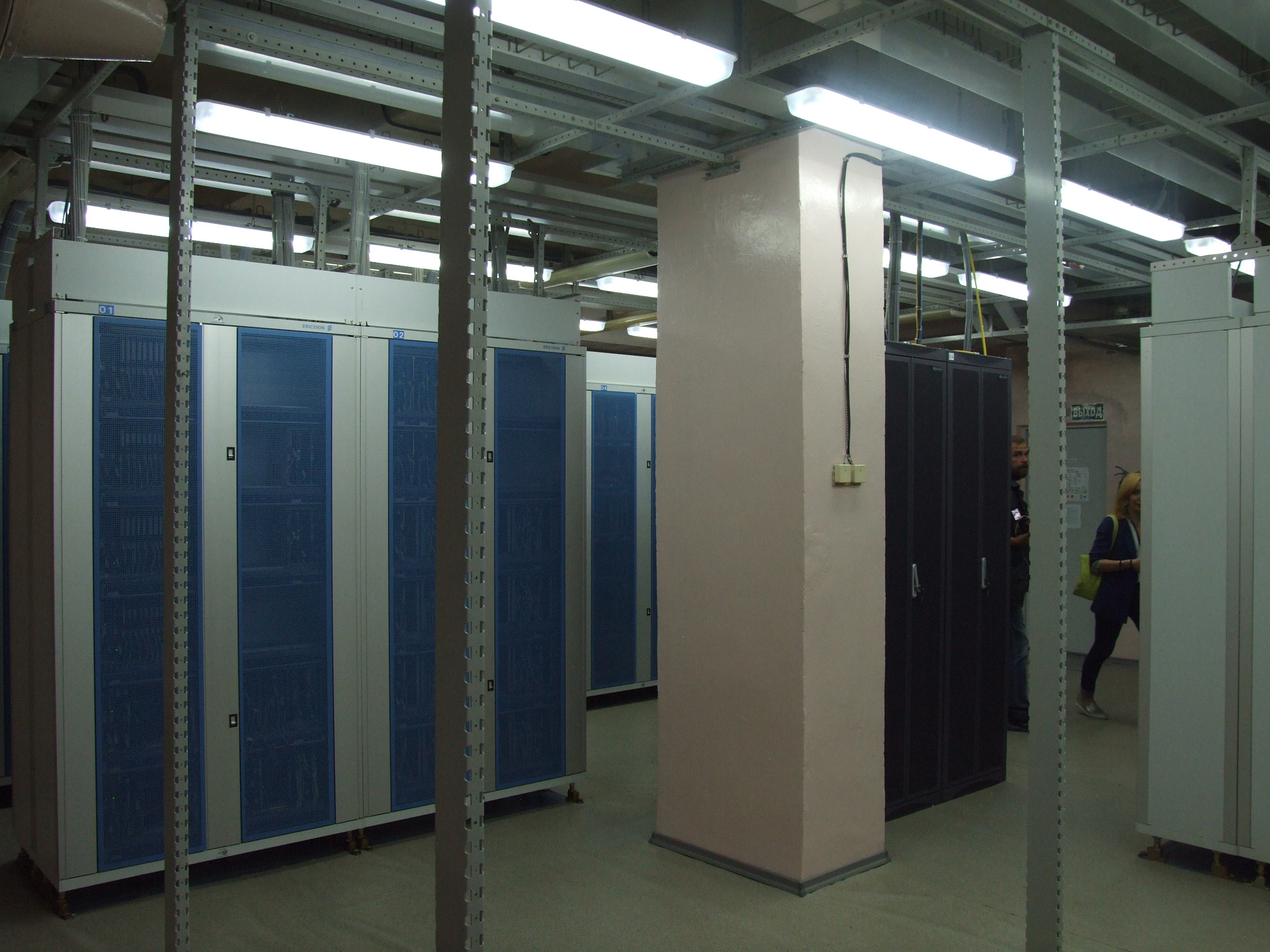
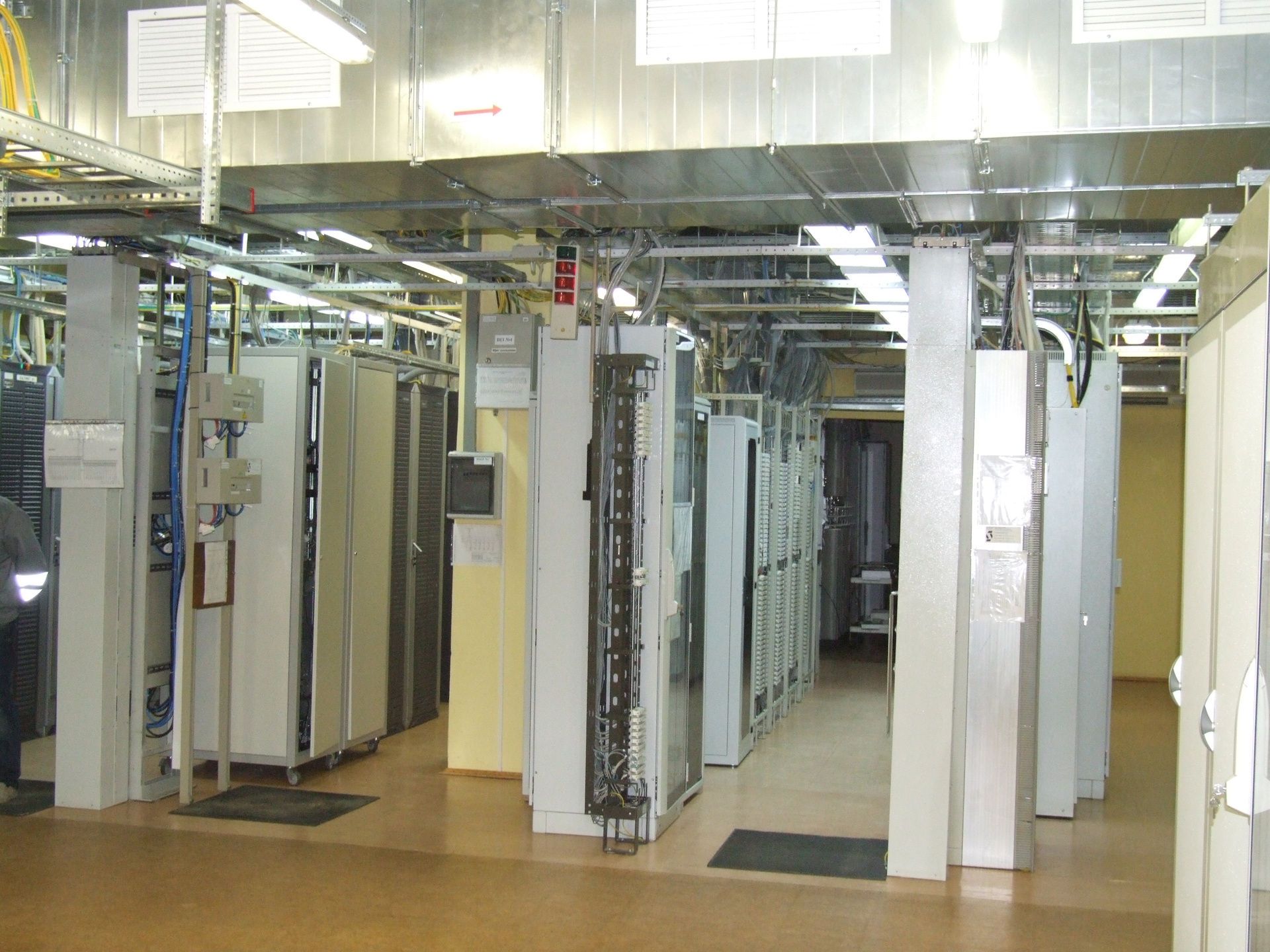
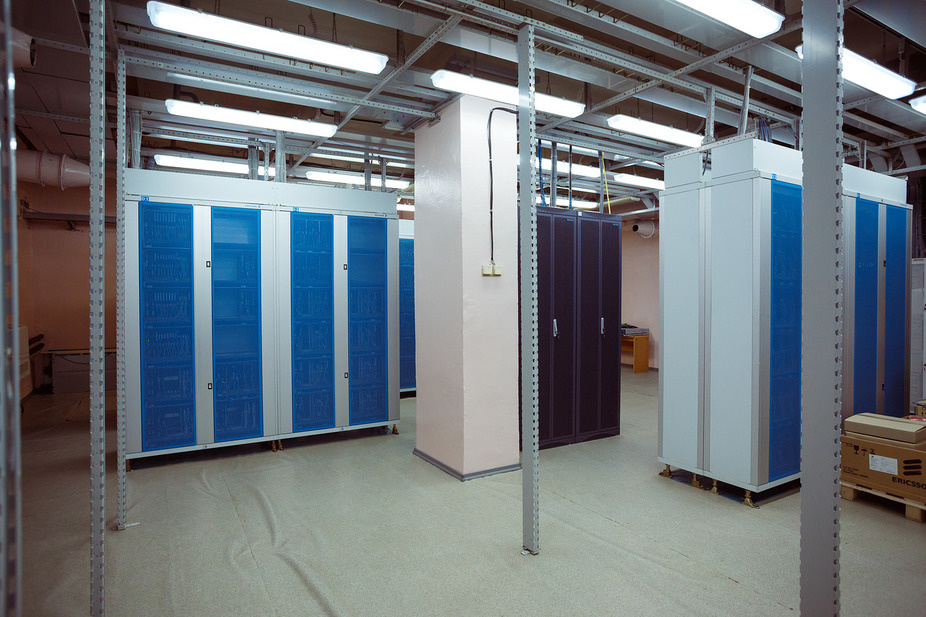


All calls from Ekaterinburg to other cities pass through this room. There are only 8 such stations in Russia. They are interconnected.
Transportation network
The transport network at the site consists of network equipment of several vendors. Here are adjacent to the rack with iron Huawei, Ericsson and Nokia Networks.
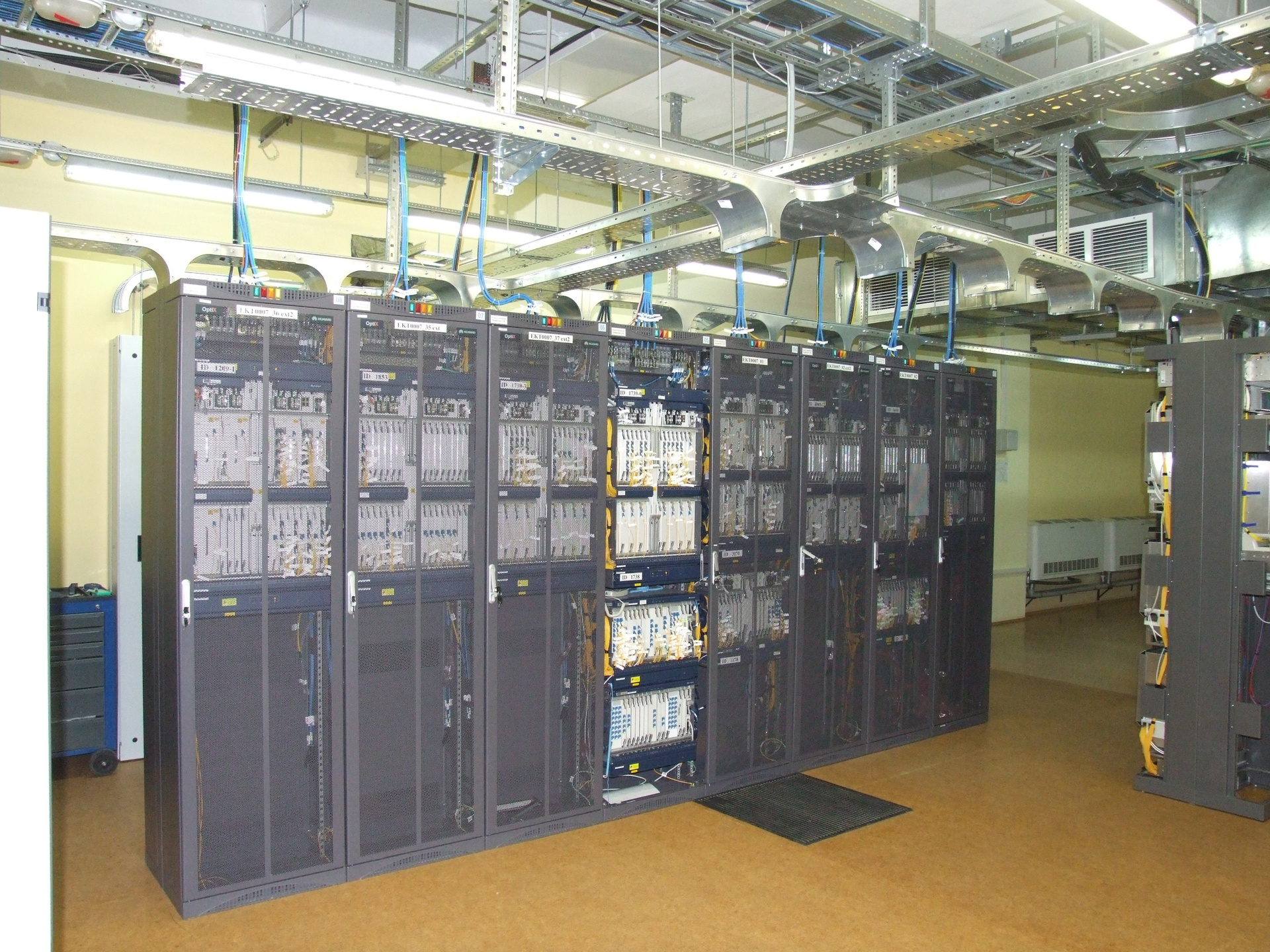
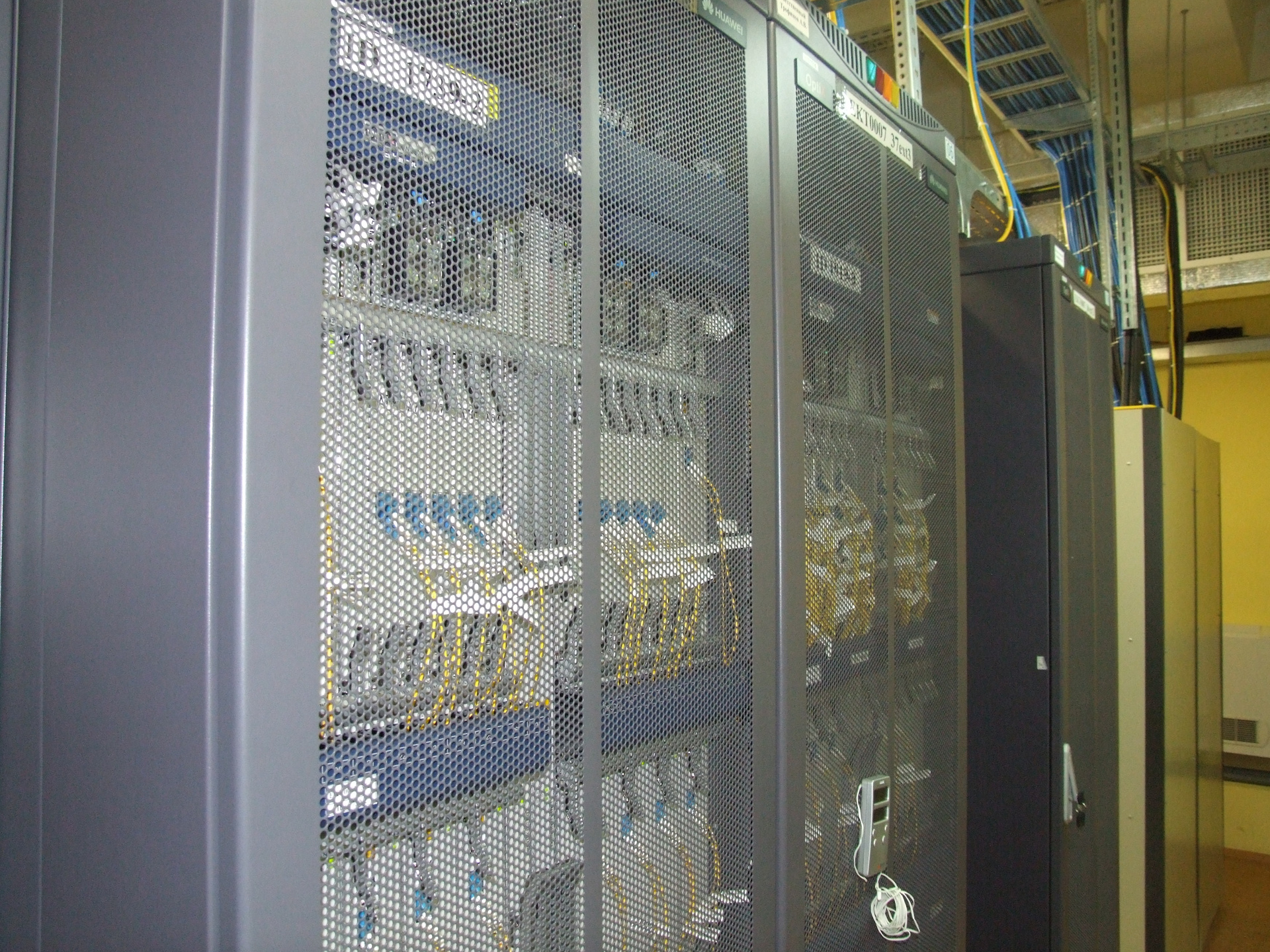


This equipment allows to organize up to forty optical channels in one fiber. Each channel can miss up to 40 Gbps. The capacity of one such rack is 4 Tbit per second.
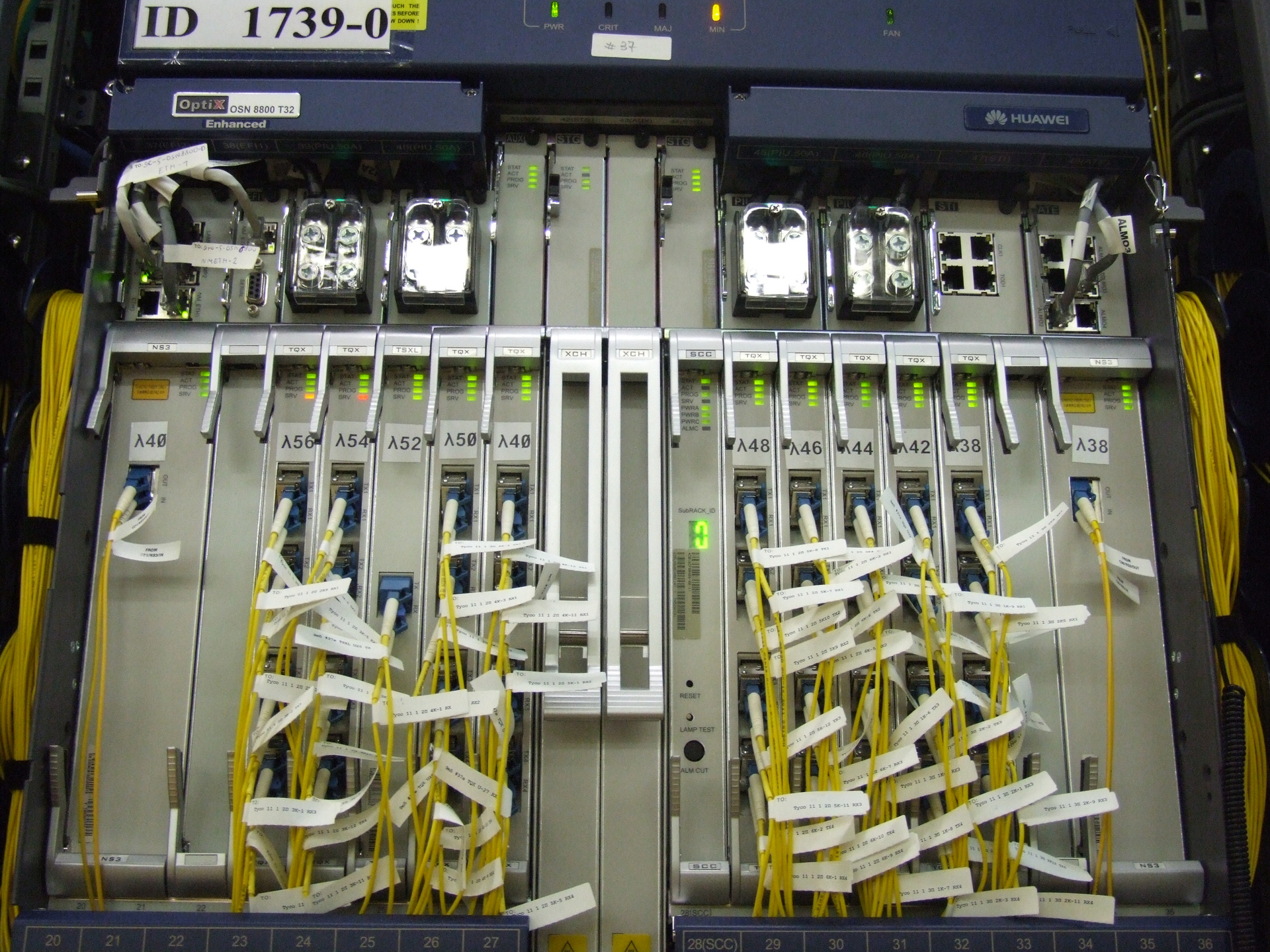
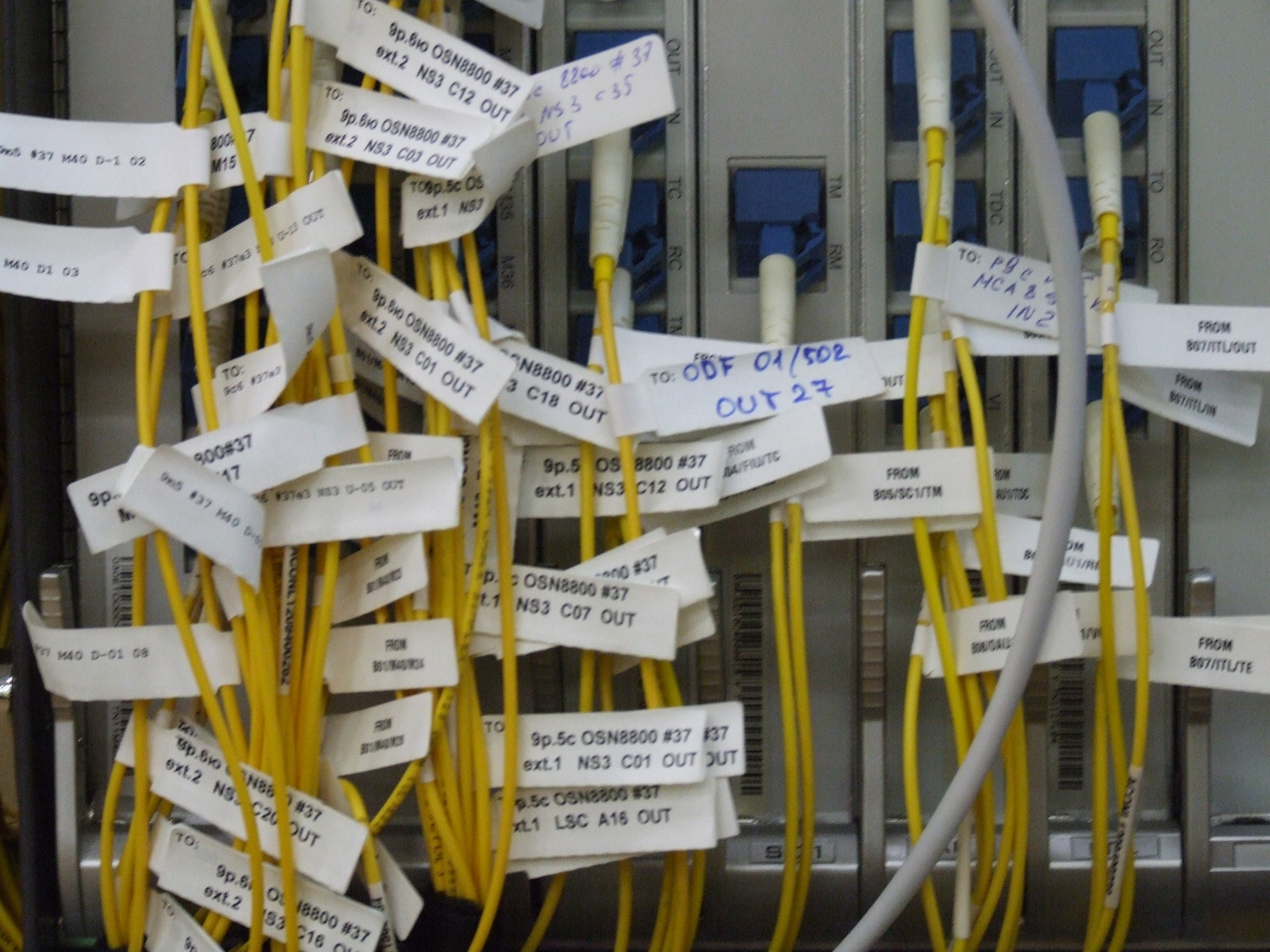
All equipment is connected to the "beam" power system. It provides reliable power supply and almost uninterrupted operation of iron. All this is served around the clock by several Rostelecom specialists.
Ural traffic
The compact data center, where IPTV and Internet signal is accumulated, is located in the most spacious and most illuminated room of these telecom catacombs.

Traffic is processed here and routed through the territory of the Ural Federal District. Channels from Ufa, Perm, Kurgan, Tyumen, Salekhard and Omsk come here. From here, these regions receive Internet and IPTV services. In Rostelecom, this premise is called nothing more than an “Internet factory” for the entire Urals Federal District.
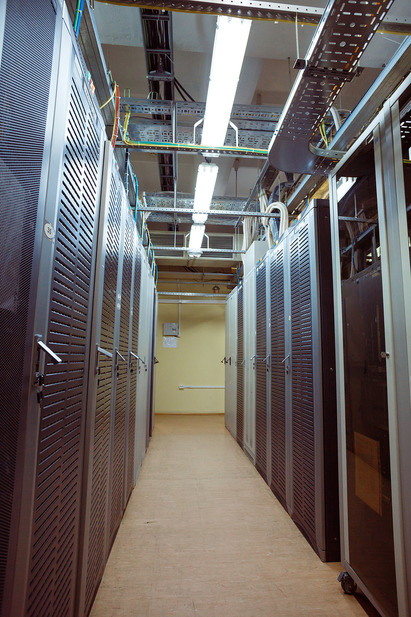

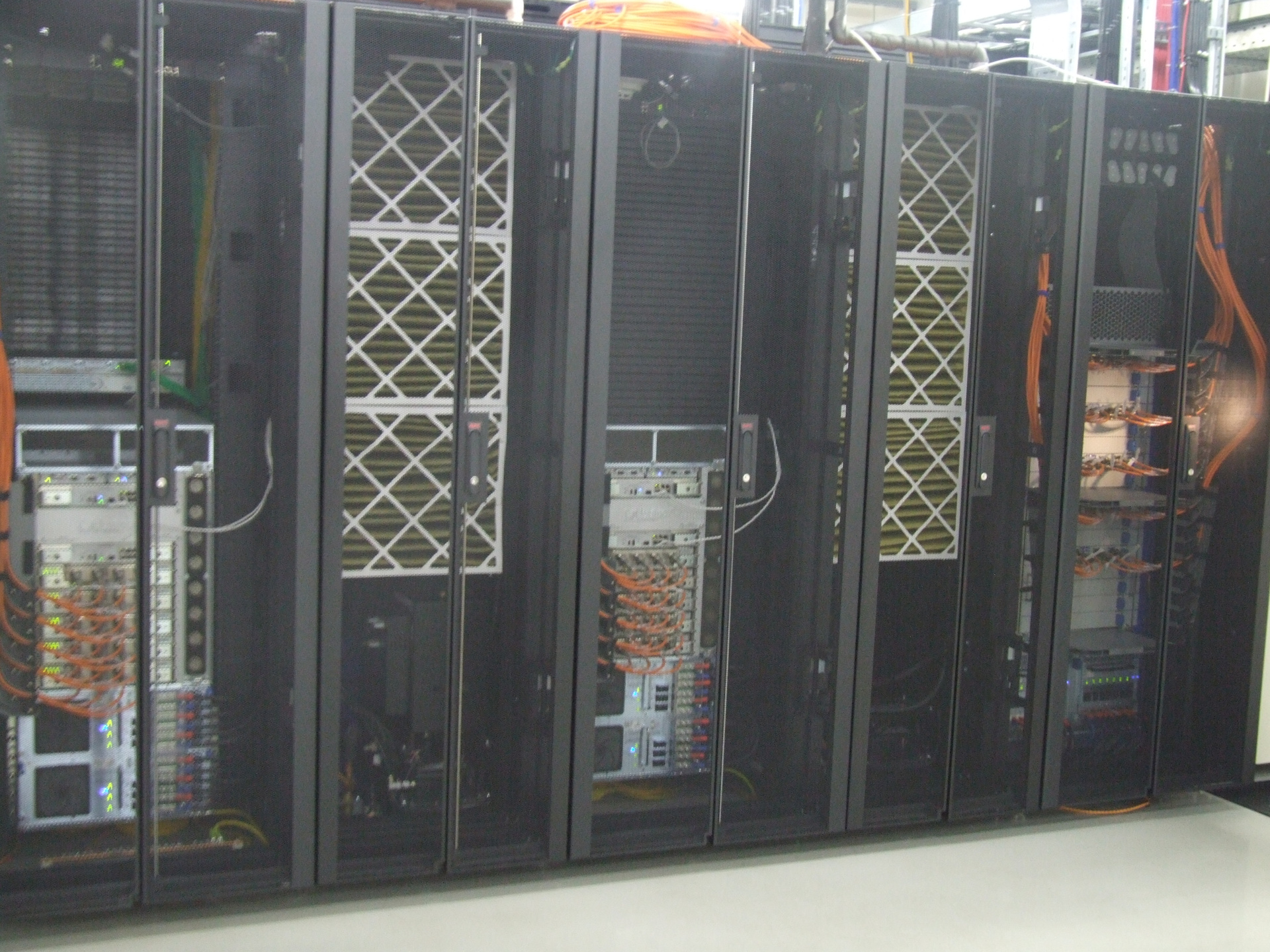

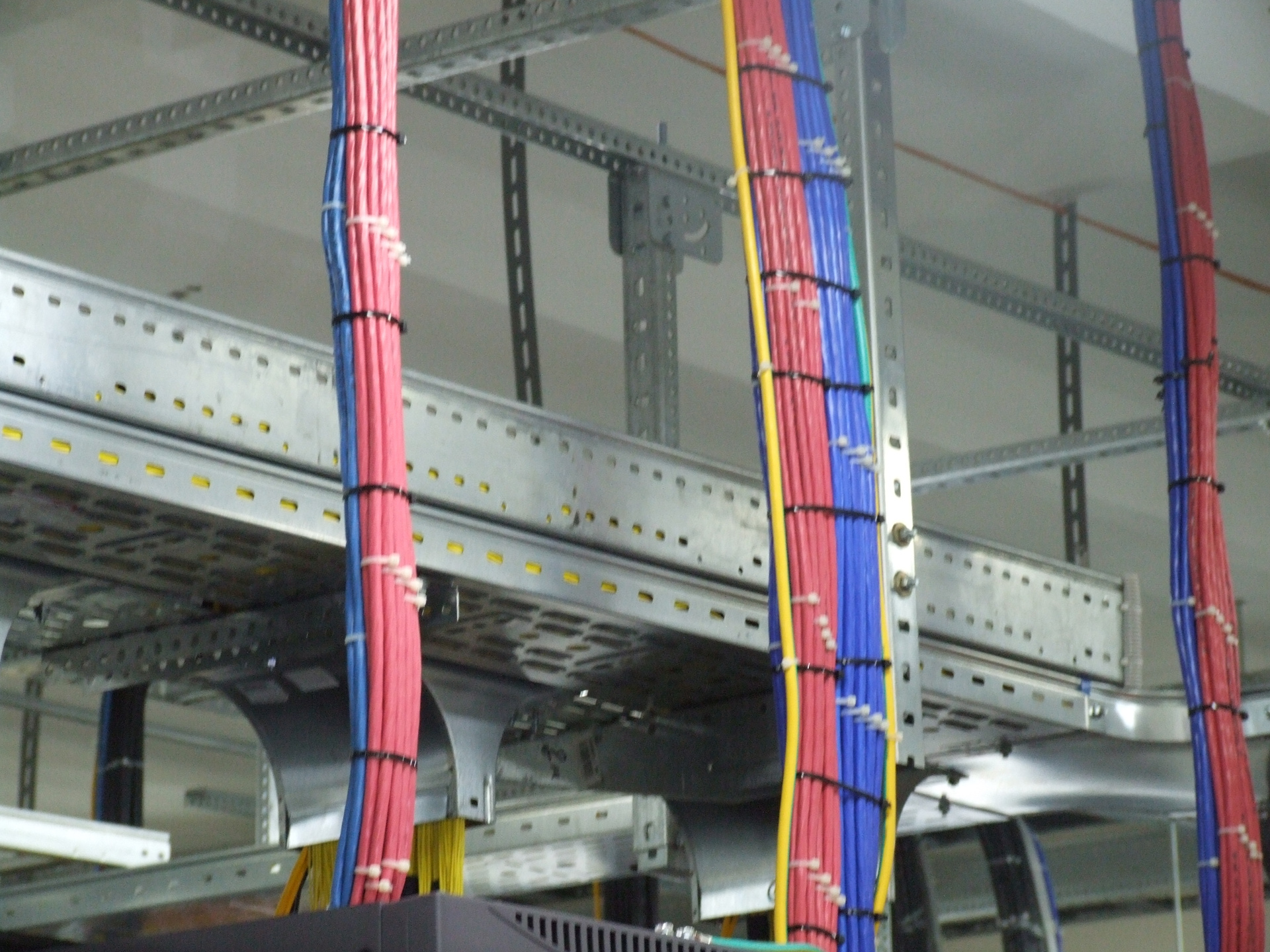
Reservation
Despite the fact that all trunk communication channels are reserved, accidents and power outages at such a facility, the thing is unacceptable. Therefore, the power supply of equipment consuming such power must be reliably reserved. Under this set aside a few rooms with hundreds of batteries and diesel generators.
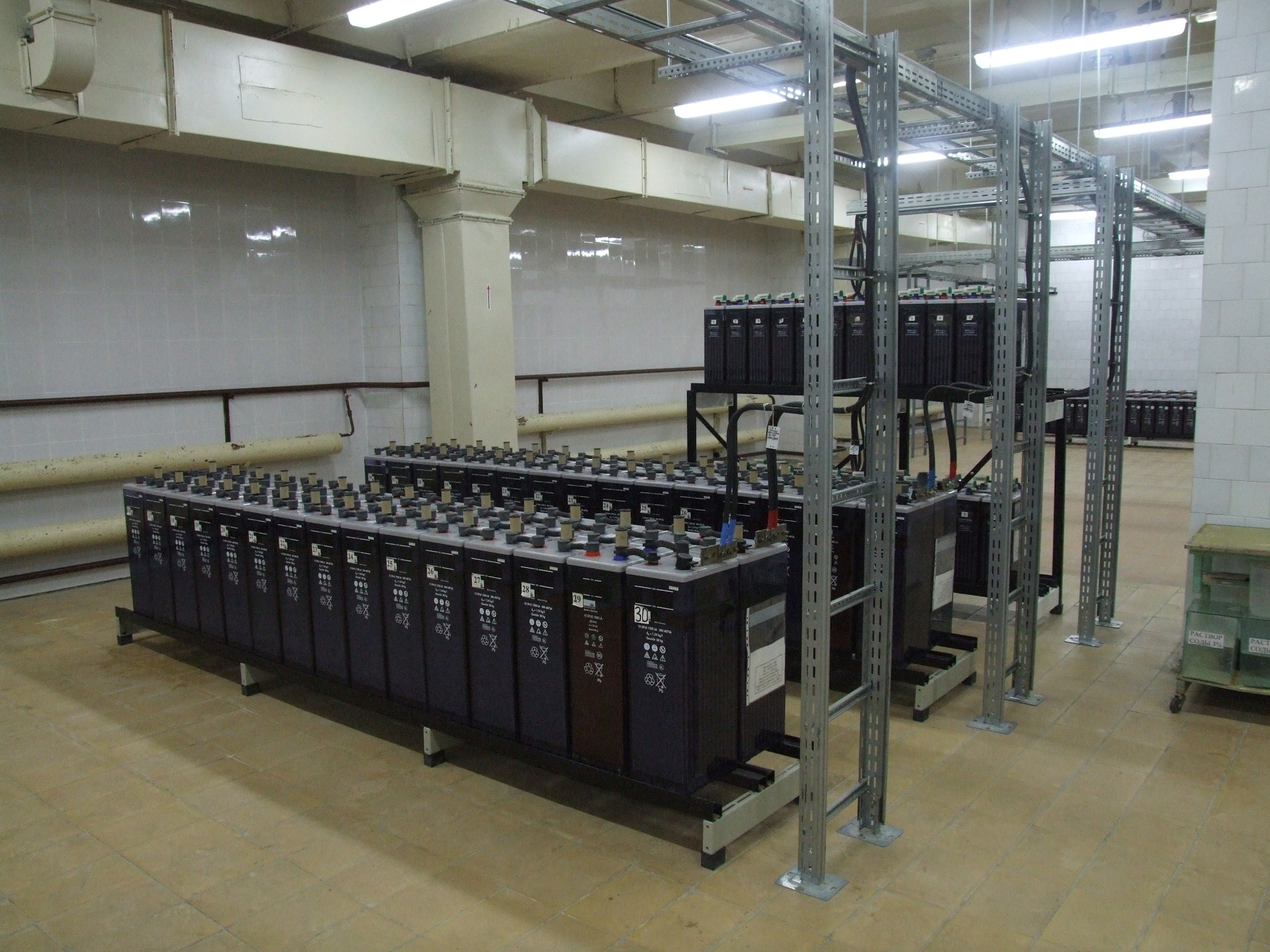
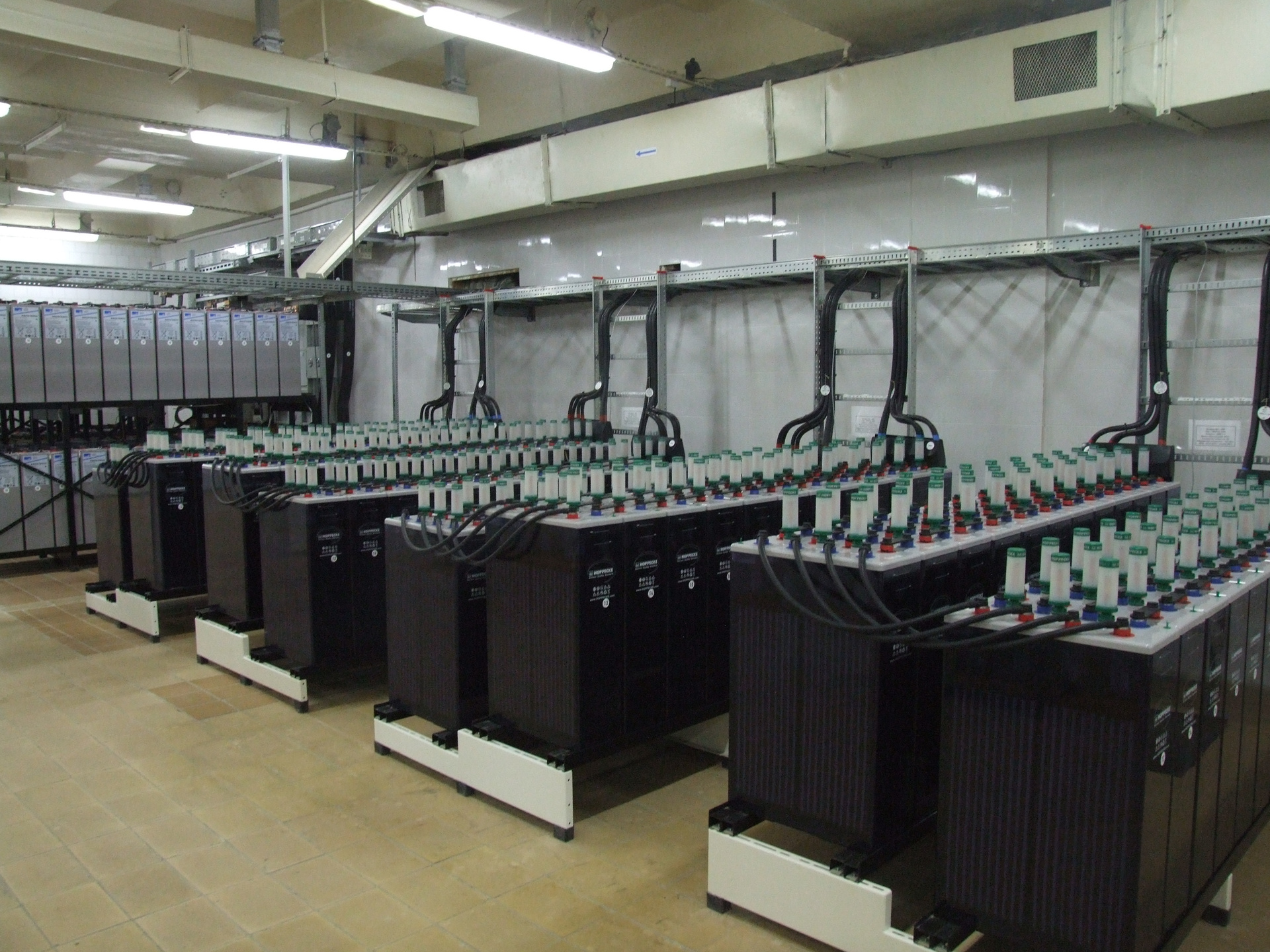
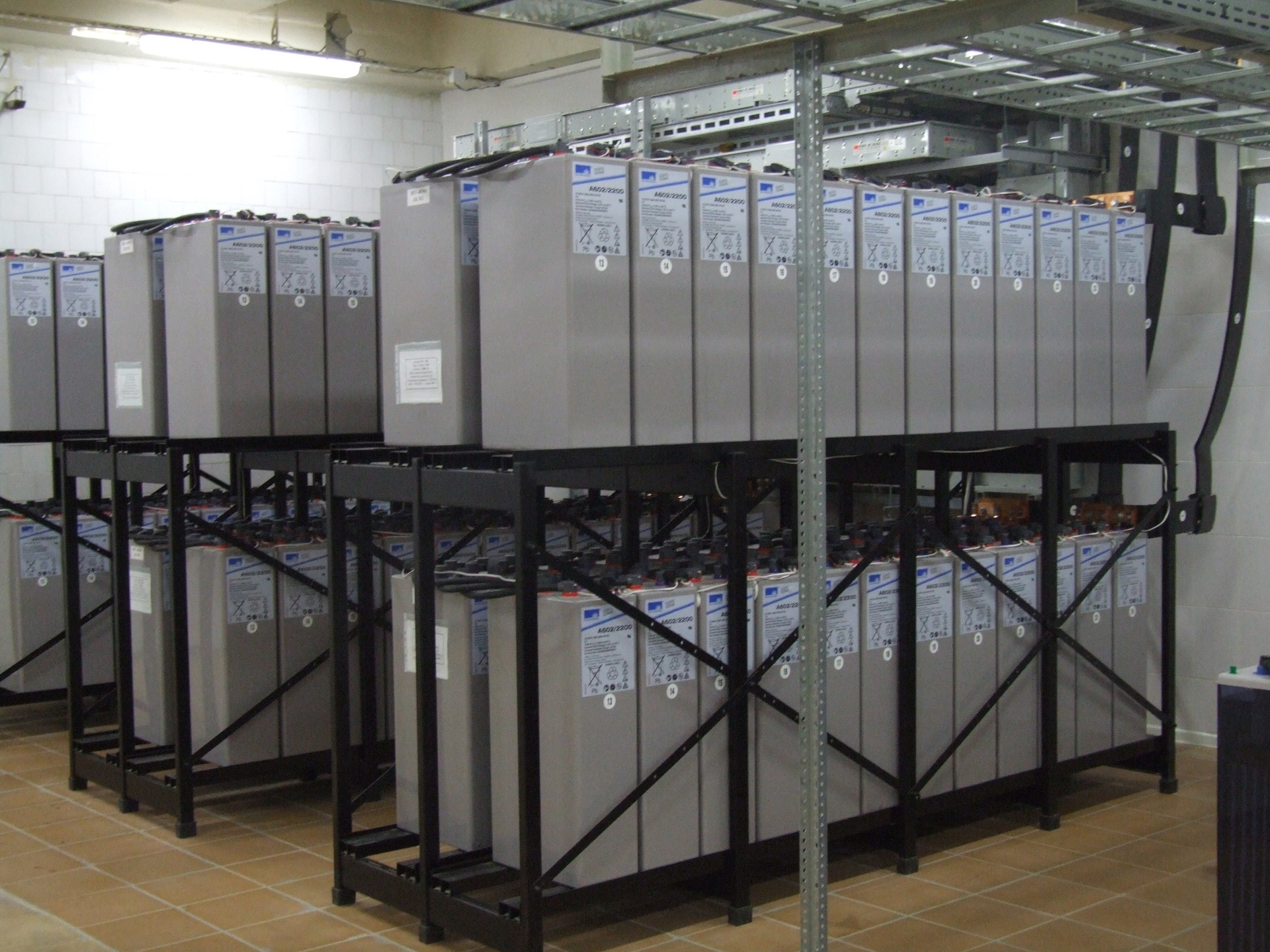
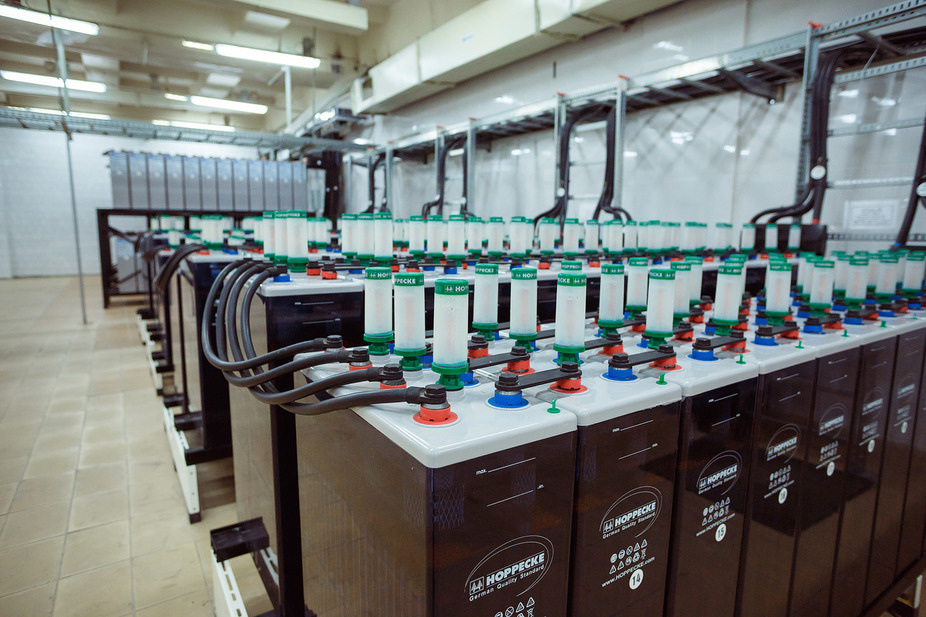

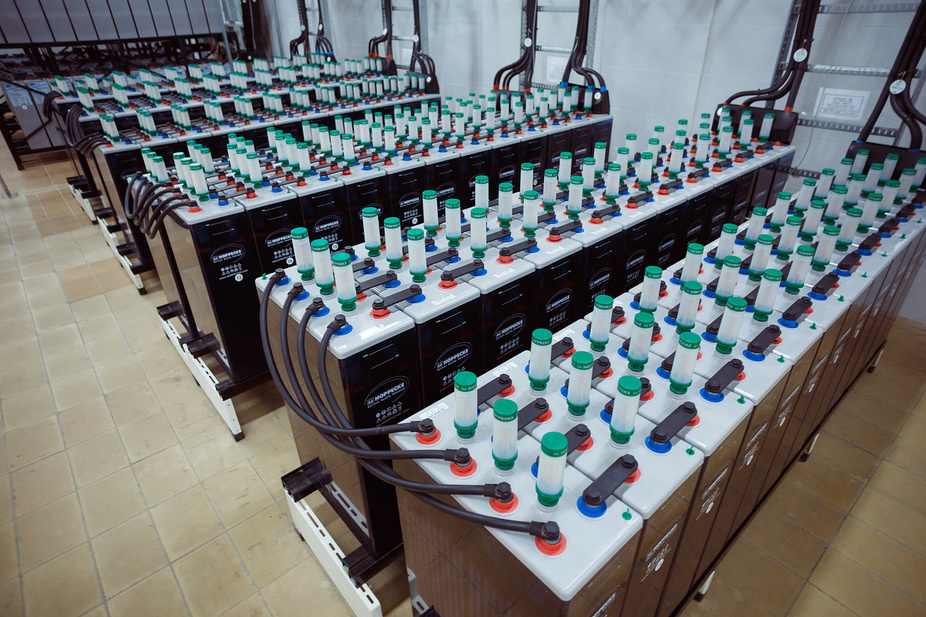
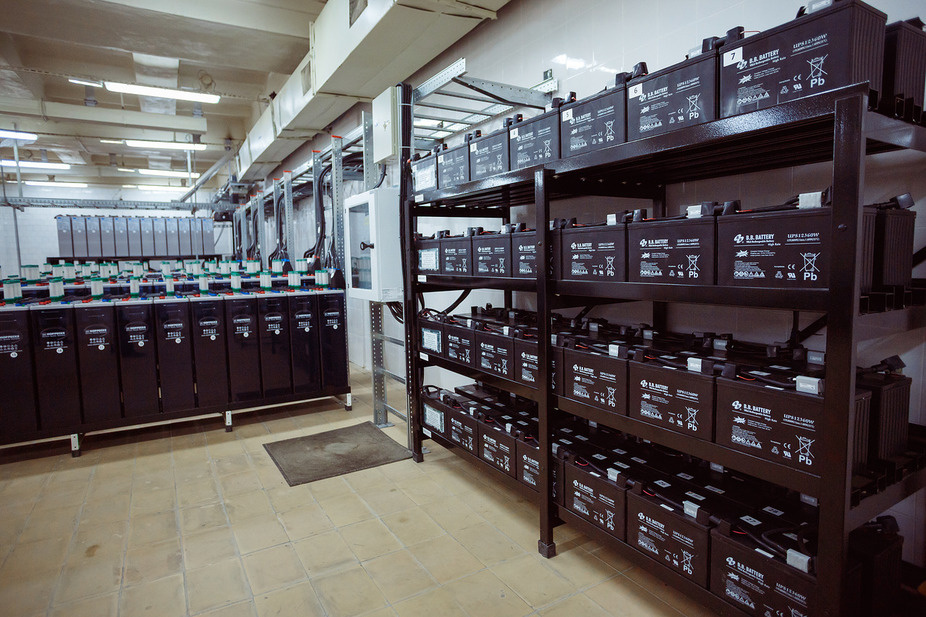
It is noteworthy that in dungeons that are protected from all external signals, cellular communication works well. Communication with the outside world is provided by such Ericsson LTE base stations.
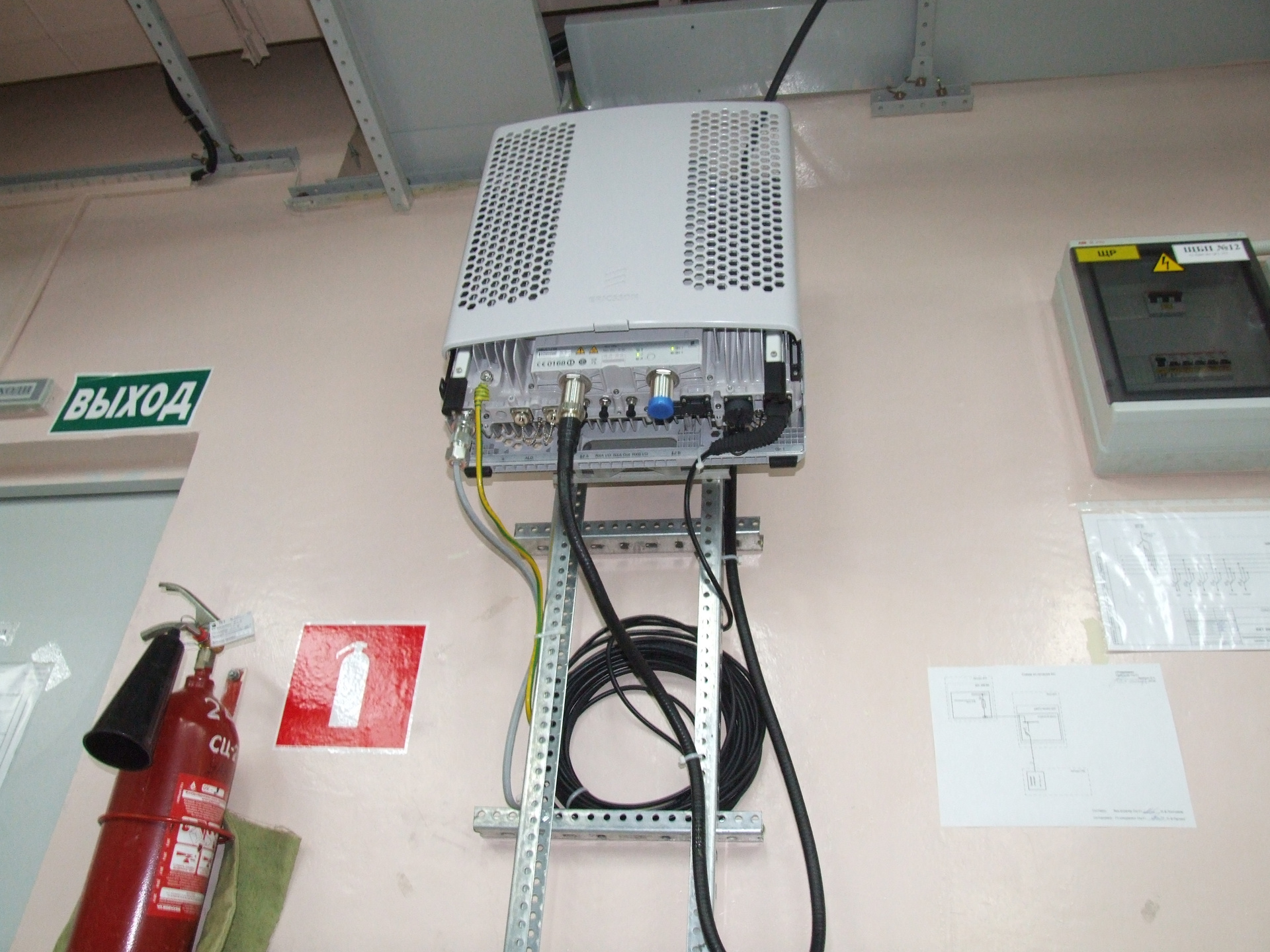
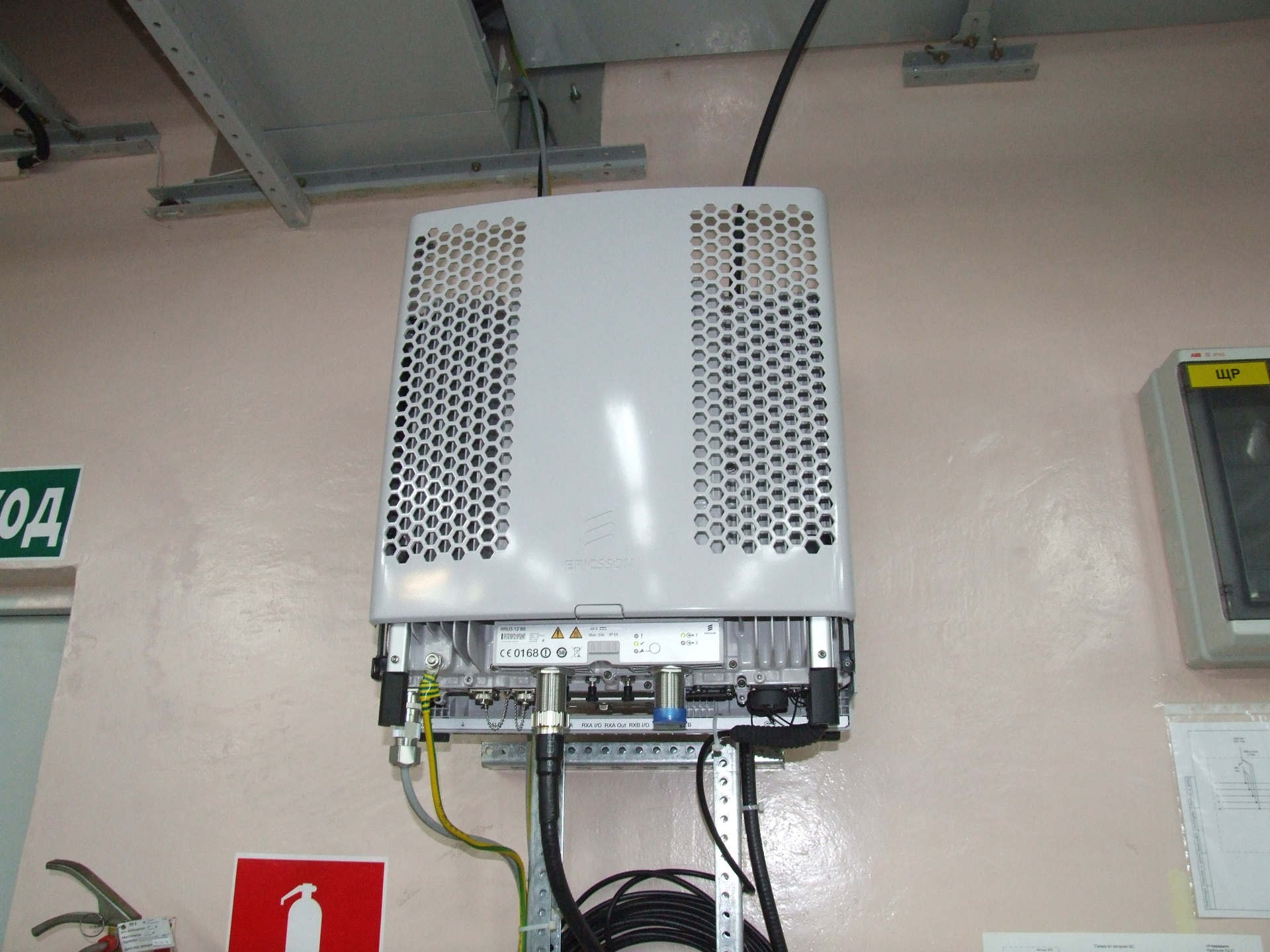
Now the object, in addition to its main functions, is listed as a backup control point of the Ural division of Rostelecom. And if tomorrow a man-made disaster or war destroys the ground infrastructure of the operator in the Urals, contact with the outside world will come from here.